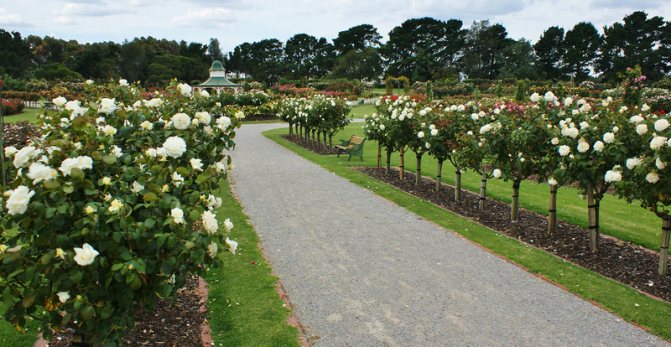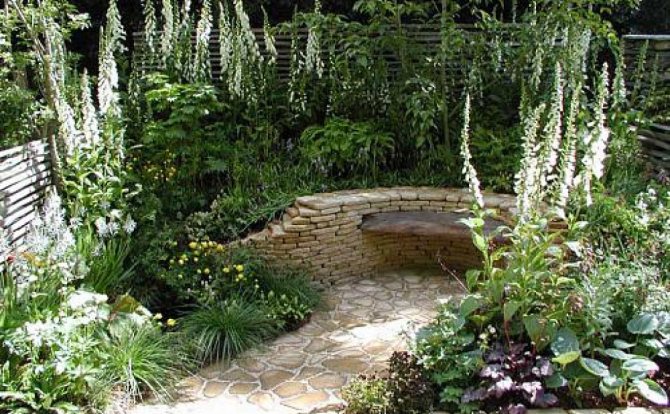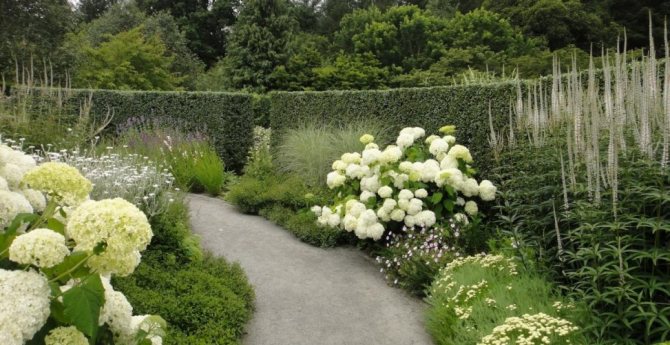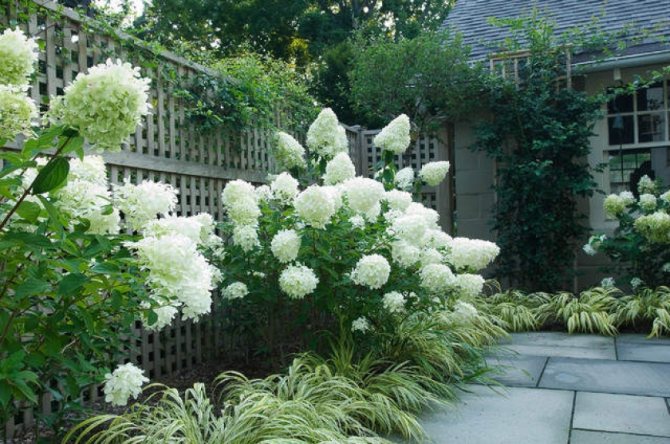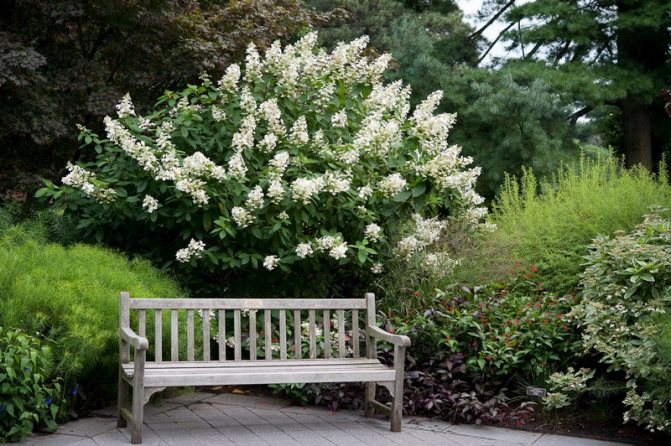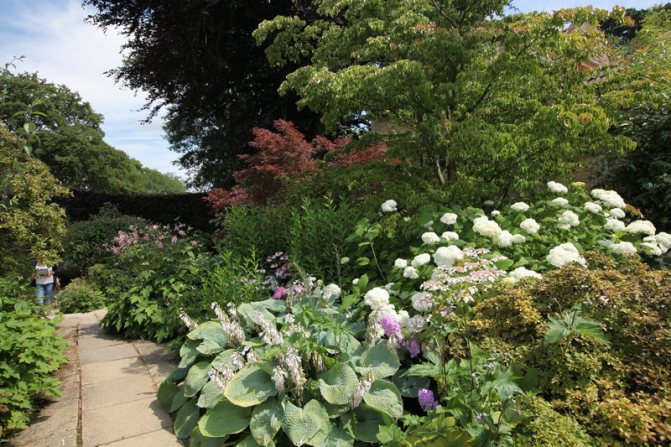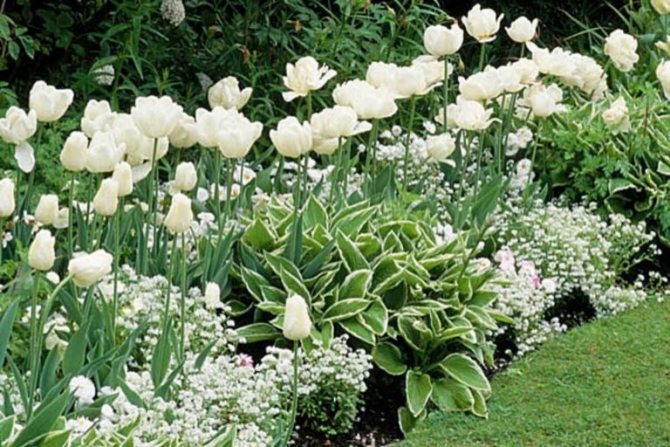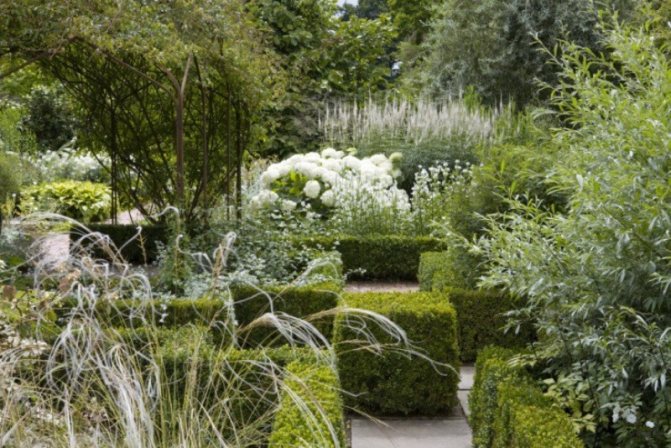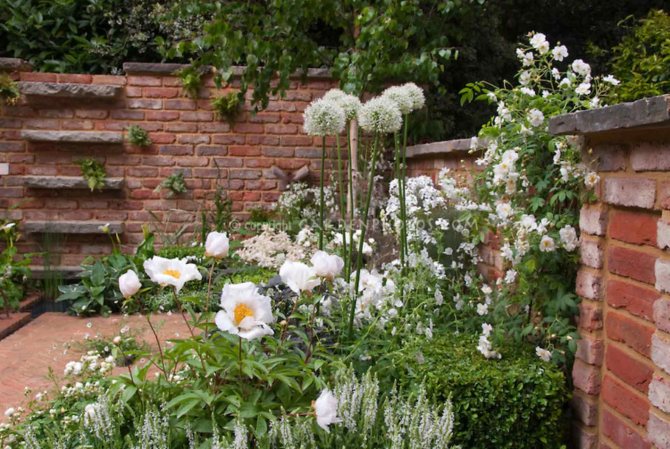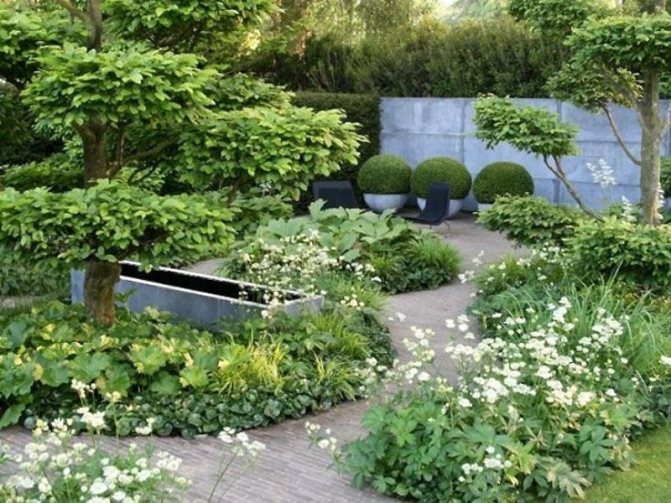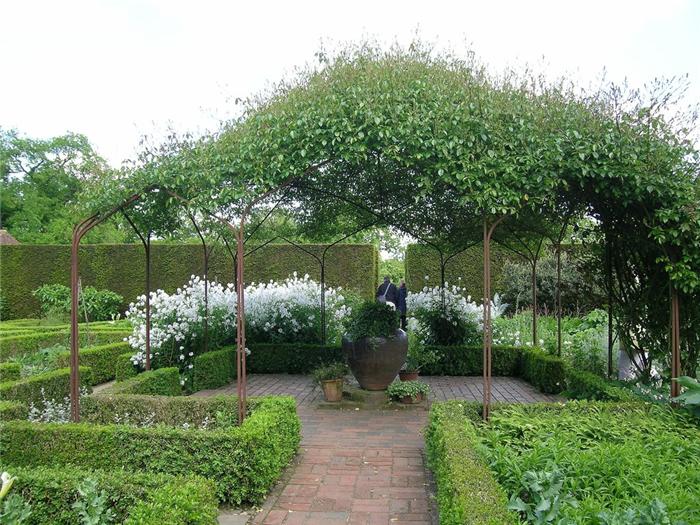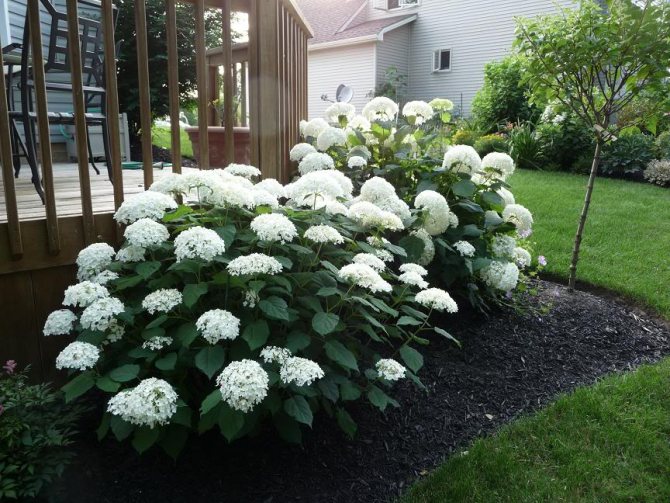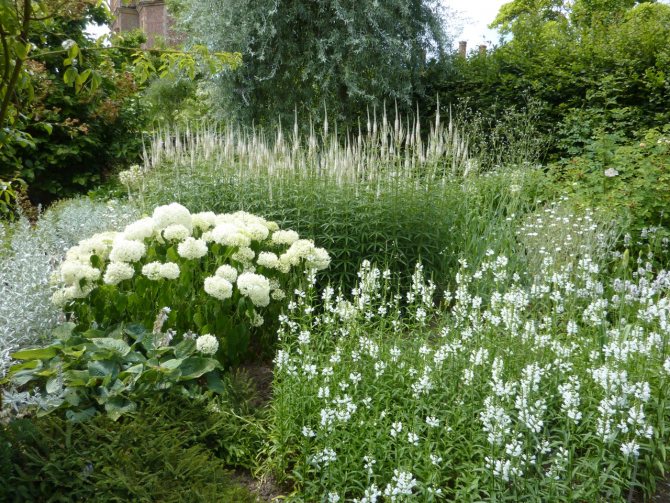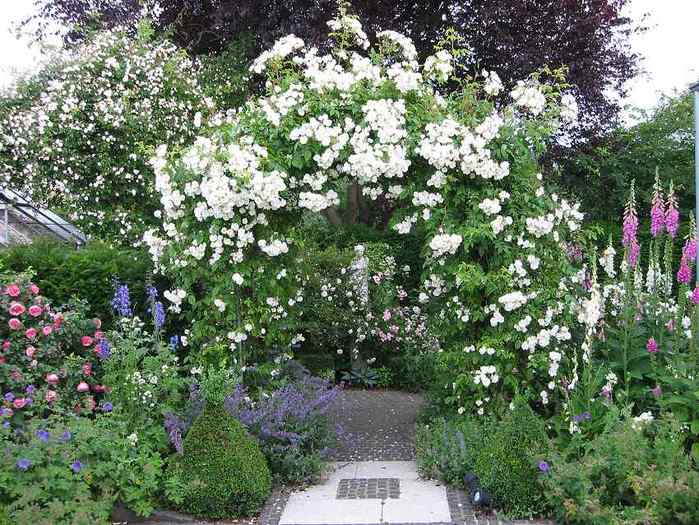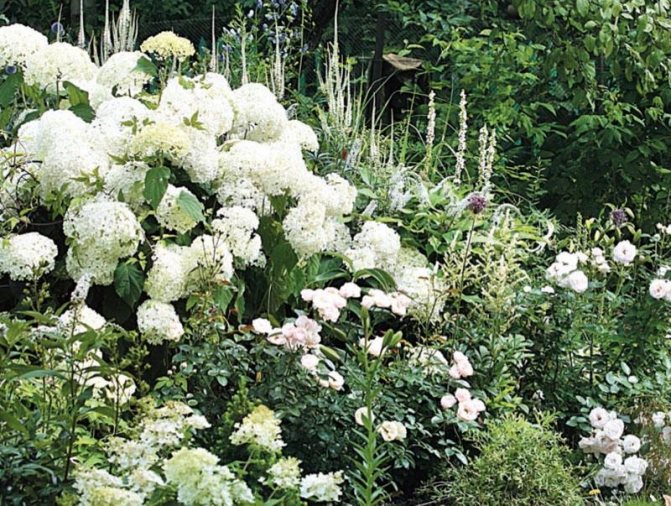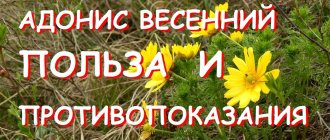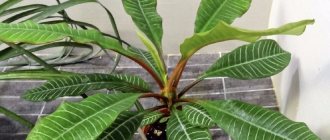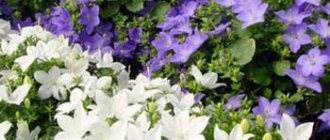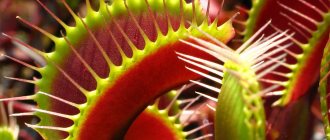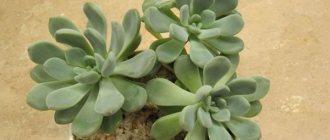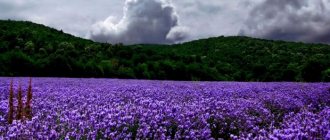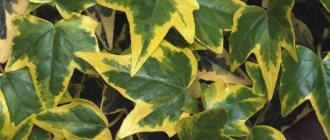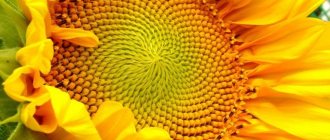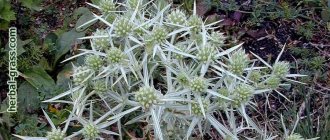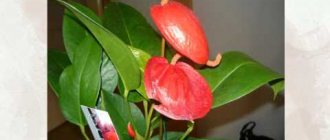Perennials with white flowers are the best decoration of the personal plot. They will certainly attract attention and at the same time cheer up, please the eye, and intoxicate with aromas. A fashionable trend in modern landscape design has become the creation of monochrome (or one-color) flower beds.
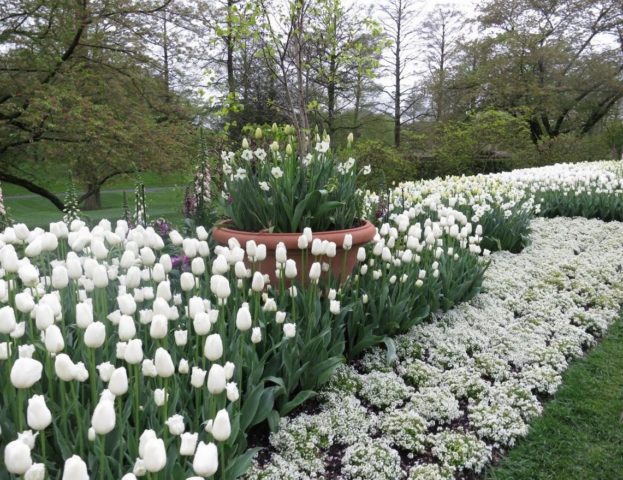
The idea is to arrange a composition of plants with a similar flower palette, in which the main white color will be diluted with various green shades.
Cut flowers for bouquets
Flower names and short descriptions give budding florists an idea of popular flowers that can be used in bouquets.
Alstroemeria. Pleases with a rich color palette and excellent durability. In the cut, they can stand for 3-4 weeks. They are suitable for people with increased sensitivity to fragrances, since they are odorless.
Anemone. The flower is called an anemone for its light and delicate petals that fall off in strong winds. The color scheme of anemones, similar to poppies, is varied. But most of all they love to add them to winter bouquets. A rich blue anemone looks unusual and mesmerizing. Frequent guest in the design of blue wedding bouquets. We even have a separate article dedicated to only blue colors in compositions. Click here and the article will open in a new window.
Aster. This is a favorite flower in an autumn bouquet. An aster, which looks like a star, is presented not only to teachers, but also to beautiful women. Aster will be an interesting element in the wedding composition.
Carnation. A correctly assembled bouquet of carnations will not be inferior in beauty to bouquets of roses, so many florists choose a delicate carnation for bridal bouquets.
Gerbera. The solar gerbera will add brightness to any bouquet. The flowers are like multi-colored daisies and symbolize the joy of life. Gerberas go well with irises and orchids.
Hyacinth. Spring flowers with delicate hues that look good in pastel bouquets.
Hydrangea. Lush hydrangea inflorescence allows you to create lovely mono bouquets that look touching in the hands of the bride.
Iris. A bouquet of irises looks sophisticated, such a composition is an excellent birthday or anniversary gift for a woman or a man.
Lily of the valley. A flower made of small lilies is a good gift for young girls. In wedding floristry, a bouquet of lilies of the valley is complemented with decorations.
Lily. A bouquet of lilies is a royal gift. Lilies in a flower arrangement can be combined with roses, to which they are slightly inferior in popularity.
Poppy Is a symbol of youth. White and cream poppies are added to the bouquets of young brides, scarlet poppies create a bright accent in any composition.
Narcissus. White and yellow flowers look tender in a bouquet and are suitable for a gift for romantic women.
Pion. Peonies look good in a composition with other flowers, bouquets look fresh and voluminous.
Sunflower. The flower is a small sun, symbolizes good luck and wealth, looks amazing both in a wedding bouquet and in an anniversary bouquet.
Rhododendron. Pink flowers look great in mono bouquets. The rhododendron has many species. The deciduous rhododendron is known as the azalea. Rhododendron Daurian in common people is called wild rosemary. But real wild rosemary belongs to heather.
Rose flower. It is the most beautiful and popular flower on the planet. The largest number of bouquets that florists make include roses.
Chamomile. The flower symbolizes love. Chamomile bouquets look cute and their simplicity allows you to add various decorations to bouquets. You can read more about the language of flowers in the article "What do flowers symbolize".
Tulip. Simple and double, white and red, multi-colored tulips are versatile flowers for any bouquets, especially spring ones.
Freesia. If you want to achieve a touching bouquet, nothing works better than this flower. The "glass" texture gives fragility and sophistication to this flower. Used in spring compositions to convey the awakening of nature. Suitable for wedding floristry and other compositions where you need to set a touch of romance.
Chrysanthemum. A chamomile-like chrysanthemum with a lot of petals in a solo composition or as an accent looks great due to its volume and colors.
Shades of red
Adelaide is not only a beautiful female name with French roots. This color was used in their works by Dostoevsky and Turgenev (the work "Office"). Today, Adelaide is called a red shade of lilac or blue, close to purple.
Lilac with a red tint is the shade of hellfire. Also referred to as hellish or the color of hellfire. It is sometimes depicted as pearlescent red or red with black.
"The color of a nymph's thigh" sounds humorous. This is the name given to the pale pink. Direct association leads to the ancient image of nymphs and the invented goddess of the morning dawn Aurora. There is a version that the name arose at the beginning of the 19th century when a new variety of roses appeared.
The “color of the bazaar fire” does not have a clearly defined shade. It is described by people with a good imagination as fiery red with a grayish (yellow-blue) admixture. Its name arose at the end of the 19th century as a memory of the tragic event - a fire in Paris at a charity bazaar. Then, during the tragedy, many people died.
Lingonberry for a long time in Russian meant the color of the lingonberry leaf - green. Today it is considered a shade of red. Ripe lingonberry - deep pink or light red. It is interesting that this very color was taken in the description of the banner of I. Grozny.
Optimism and tragedy merged in the popular 18th century shade of black widow. For some unknown reason, this was the name of one of the halftones of pink.
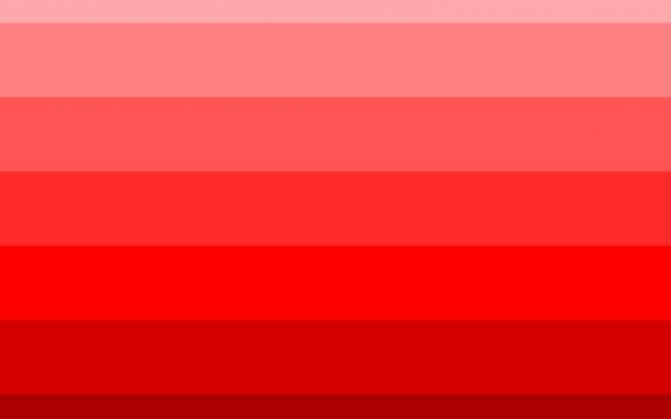

Exotic flowers for bouquets
Exotic flowers in bouquets are increasingly being used by florists. Agapanthus, heliconia, calla, plumeria, strelitzia, celosia and other flowers are found in compositions.
The most popular among all exotics are orchids... The fragile orchid flowers, native to Central America, symbolize beauty and love. These flowers look great in any composition, they can be decorated with any decorations. The orchid has many varieties. The following flowers are used in wedding bouquets: ascocenda, wanda, dendrobium, phalaenopsis. Bouquets with orchids retain their original appearance for a long time, which makes them attractive for wedding floristry.
Combinations of various herbs, fruits and berries with flowers are no less popular in floristry.
Herbs in flower bouquets
To compose bouquets, not only flowers are used, but also various herbs.
The most common herbs that are added to the bouquet are represented by the following list:
Gypsophila Gypsophila is a delicate herbaceous plant with a large number of small white flowers. The plant symbolizes modesty. Florists offer bouquets with gypsophila for timid and young girls and brides. Openwork flowers can not only complement any bouquet, but also look great separately. Delightful bouquets are obtained by combining gypsophila with orchids, ranunculus, roses and tulips.
Feather grass Feather grass is a graceful fluffy herb that florists love to make various bouquets in combination with flowers. Feather grass is most often used to decorate dry compositions. Feather grass with dried roses or wildflowers will fit into any interior design. It is fashionable to see silk spikelets of feather grass in a live bouquet. Spring and autumn wedding compositions with this herb are created in soft pastel and silver colors.
Lavender
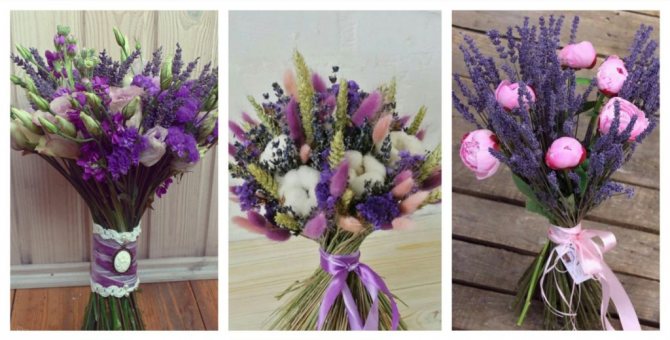

Lavender symbolizes love and happiness. Delicate lilac and purple colors, pleasant aroma of the plant attract attention. Lavender is a frequent visitor in bouquets of wedding floristry. In Provence style weddings, the bouquet looks stylish and original.
Tansy Tansy is a medicinal herb with golden yellow flowers. The plant has a camphor smell, so they prefer to make dry bouquets for rooms from it. Dried tansy are used for autumn and winter compositions. Live tansy looks great with a variety of meadow flowers, especially chamomiles. They keep bouquets of tansy on an open terrace or in a frequently ventilated area.
Herbs No less popular rosemary, sage and other herbs.
Florists use herbs not only to dilute bouquets, but also make up whole compositions of several types of herbs with flowers. Herb bouquets make a good addition to rural and vintage weddings.
Many-sided shades
Modern harlequin denotes scattered color patches across the surface. It was originally used to define variegation and color. At the beginning of the 19th century, a very fashionable fabric at that time was described in this way, consisting of multi-colored triangles. Sometimes the color of opal was called harlequin because of the play of light in the sun's rays with all the colors of the rainbow. Today, it is most often used to describe the color of an animal, the spots on the skin of which are scattered throughout the body.
Havana cigars differed not only in their composition, but also in color. Therefore, this product came to be called havana due to its color scheme. Or havana brown. Havana is designated as dark brown with a touch of chocolate. Another variant of the shade, denoted by the same name, is a little lighter, similar to a mixture of chestnut and lilac.
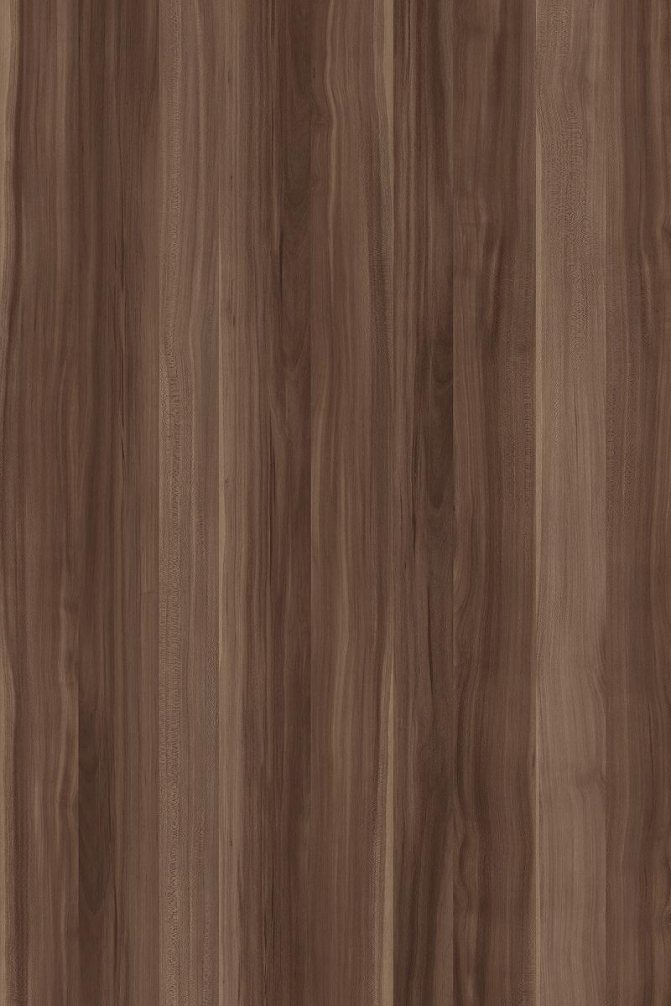

Berries in flower bouquets
When making bouquets, berries are added in summer and autumn during the growth or ripening of the fruit. In summer bouquets, unripe fruits are popular, which will not stain the bride's dress, and in autumn - hard fruits of shrubs and trees.
In summer floristry you can find blackberries, strawberries, raspberries, St. John's wort. Fruits in autumn floristry bear the same names, like shrubs and trees - hawthorn, viburnum, mountain ash, rose hips. Many of these berries can be added to bouquets all year round.
Let's consider the description of some berries in more detail.
Blackberries and raspberries
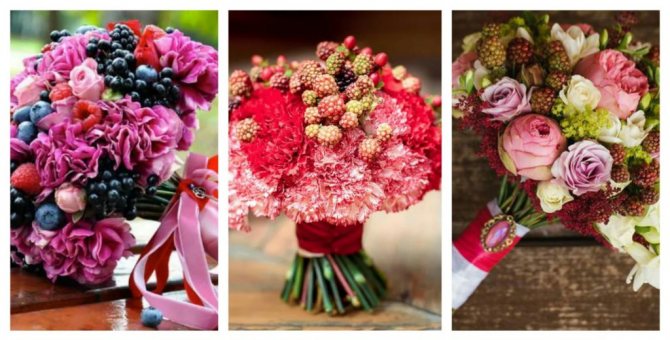

Blackberries and raspberries have an interesting shape. The refreshing look and sweet aroma of the berries will be a pleasant addition to any bouquet. Blackberries and raspberries symbolize wealth and happiness, which is why they are popular in wedding floristry.
Please note that in this case, blackberries and raspberries are only decorative in the bouquet, unlike edible bouquets. We wrote about them here (opens in a new window). Fruit and vegetable floristry assumes practicality, when used fruits, berries or vegetables in a bouquet can be eaten within 1-2 days.
St. John's wort
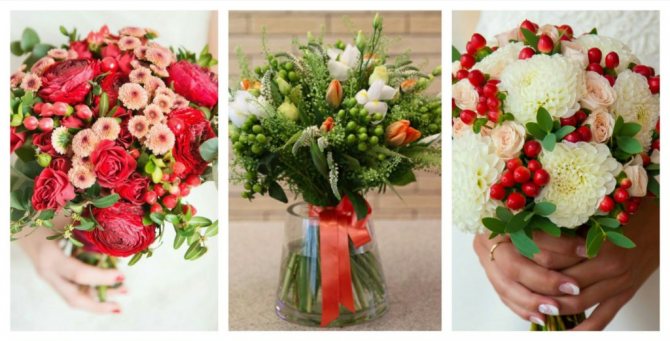

St. John's wort or Hypericum is a medicinal plant with bright yellow flowers. But the fruits of the plant are popular in bouquets. The bright red berries of St. John's wort delightfully fit into bouquets with irises, calla lilies, sunflowers and roses. Unripe fruits of white, green and yellow shades of St. John's wort are suitable for creating romantic bouquets.
Viburnum Red viburnum has long been a decoration of weddings. Viburnum twigs were hung indoors and placed on the table, added to the bride's bouquet. Nowadays, florists add viburnum to bouquets, emphasizing the charm of the bride.In bouquets, viburnum goes well with gerberas, calla lilies, poppies, and roses.
Strawberry
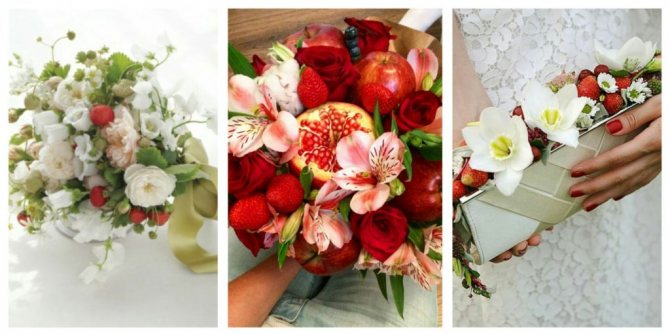

The fragrant strawberry in the floral arrangement symbolizes fertility. When added to a bouquet, dense and slightly unripe berries are chosen. Strawberries go well with pastel-colored flowers, but you can also add bright plants such as lilies, roses, eustoma.
Rowan Orange or red rowan berries look great in an autumn bouquet, both for a gift and for a bride. Rowan bunches can be added to any flower arrangement, but they look more interesting in bouquets of white, burgundy, orange and purple flowers.
Unusual names for color shades
13.01.2015
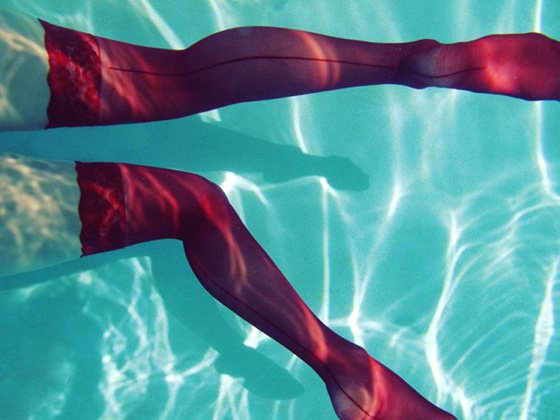

To interest us, attract attention, intrigue manufacturers of tights and lingerie often come up with such names for color shades and combinations that it is difficult not only to imagine, but also to understand what this or that shade really is. We are already accustomed to the fact that nero is black, but, for example, few people know that fumo, a favorite color of many manufacturers, is smoky gray. More examples from our assortment: tights in greystone color - you can still guess that this is the color of "gray stone", "ghotic grape" - already a little more complicated - "dark grapes".
In the 18th century, there was a whole cult of color. Quite unusual shades came into fashion, and unusual names added to their popularity. The fashion for shades was changing so quickly that not everyone had time to find out what was hidden behind the exotic name, as there was already another new shade at its peak.
For a time flea color was the squeak of fashion, and many shades were distinguished: the color of a flea's head, a flea's back, an abdomen, the color of a dreamy flea. According to rumors, the milliner of Marie-Antoinette Mademoiselle Bertin brought into fashion "the color of a flea during childbirth fever." They even reached such tones as the color of the Nile, the lava of Vesuvius, the color of a frightened mouse, a toad in love, a spider plotting a crime. As soon as the French queen Marie Antoinette gave birth to an heir, fleas were instantly forgotten. The highlight of the season was the color “Dauphin's surprise” - the one that is still called “the color of children's surprise”.
As we already wrote, this year the most relevant color is marsala (marsala).
Nevertheless, in our time, color shades have quite digestible names. The history of the emergence of the names of some shades is curious, and we offer you our short color dictionary.
Aventurine - [from aventurine "a mineral, a kind of quartz, yellowish, brownish-red or green, penetrated with sparkles of the smallest inclusions of mica"; discovered by chance (per aventura) in 1750 fr. aventurine aventure "adventure"] - silver-black, black with a metallic sheen.
Adelaide, adelaidin - [from Adelaide (Old German. "noble" + "state, position") - the name of the heroine of the song of the same name by Beethoven on verses by F. Matisson] - a red shade of blue or lilac, close to purple; the name was extremely fashionable in the middle of the 19th century. The original Mattisson's text refers to the color purple (purpur), which is associated with a sad, melancholic mood. “He was dressed in an old, tattered coat of the color of Adelaide, or, as we say, an odellonide” (I. Turgenev. Office). The color of what is allowed in Japan.
Adrianople - bright red, from the name of the paint, which was made from madder. Dahl has Adrianople - [after the Turkish city of Adrianople, where the art of paint production flourished] - bright red, madder paint.
Hellfire, hellfire, hellfire - [tracing paper from French. flame d "enfer] lilac shade of red. Or pearlescent red. Or black with red streaks.
Alabaster, alabaster - (obsolete) - [from alabaster "a dense, fine-grained variety of white gypsum, used for construction and various crafts" Greek.Alabastron is the name of a city in Egypt] - pale yellow with a matte shade, matte white. More often about complexion, human skin.
Alizarin - color of red alizarin ink.
Almandine - [from almandine "gem from the group of garnets" upper. Almandin after the name of Mount Alabanda in Asia Minor] - dark red with a purple tint, dark cherry.
I will - [from fr. acajou lang. tupi-guarani acaju “tropical tree of the sumac family, the so-called. Mahogany] the color of mahogany.
Amaranth - color close to purple, violet. From the name of the plant "amaranth" beauty, velvet, velvet, cockscomb (squid - red grass). Or the color of the wood is rosewood, lilac pink, light purple, crimson.
Amethyst night, amethyst - [from amestyst "semi-precious stone, transparent kind of quartz" it. Amethyst, fr. amthyste Greek. "Not" + "intoxicating"; the name is associated with an ancient belief, according to which this stone attracts wine vapors and thus protects its owner from strong intoxication] - dark violet-blue, intense sparkling blue, violet-red with blue, cherry-lilac.
Amiante - the color of amiant (a type of asbestos): whitish, off-white. Most often - about the color of the sky.
Anthracite - [from anthracite "the best grade of coal" Greek. "Coal"] - deep black, with a strong shine.
Harlequin, harlequin - [from Harlequin - the name of the character of the Italian national theater (the so-called commedia dell "arte), a witty servant-jester, whose characteristic belonging is a costume made from pieces of cloth of all kinds of colors, etc. arleccino] - variegated, multi-colored. In the beginning. XIX century. Harlequin was also called a fashionable fabric made of multi-colored triangles, as well as a precious stone playing with all colors - a noble opal. Nowadays it is often used to characterize the color of animals. Harlequin color, in which colored spots are scattered in separate areas on the head, withers, back and sacrum of the cat ...
Aspid - the color of the slate-asp, used in the past for the manufacture of blackboards: black and gray.
Bottlenose dolphin - [from bottlenose dolphin "mammal of the dolphin family of the order of whales"] - silvery green-blue.
Hook - deep red with a bluish tint, dark red with a bluish or purple tint. Name options: crimson, crimson, crimson, crimson, crimson, purplish, crimson.
Crimson - crimson color: bright crimson.
Purplish - an obsolete form of the word crimson.
Bazaar fire - the definition of the shade is almost impossible due to the complexity of the associations arising in connection with this name: fiery red with an admixture of yellowish blue or gray. The name arose at the end of the 19th century. - in memory of the terrible fire at the charity bazaar in Paris in May 1897, when a large number of people died in fire and smoke.
Bakan, Bakanovy, Bakanny - bright red paint from cochineal used in painting [Turk. and an Arab. bakkam] - red paint - bright red, crimson.
Barkansky - [from barkan "dense, durable woolen fabric, patterned and one-colored, used for upholstery of furniture instead of expensive silk damask" ital. barracano Arabic-Pers. barrakan] - one of the shades of the red scale. Referred to as a color coding in the 30s-40s. XIX century.
Terrified nymph's thighs - a shade of pink. Perhaps it arose at the beginning of the nineteenth century with the advent of a new variety of roses. (There is also the color of the "thigh of a nymph." This is a pale pink, the nymph is calm.) According to other sources, it was pink with an admixture of ocher. Under Emperor Paul, the lining of military uniforms was painted in this color. But since the fabric for officers and soldiers was different in quality, the officer's shade was called "the thigh of a frightened nymph", and the soldier's - "the thigh of a frightened Masha."
Beryl - by the name of beryl, a transparent greenish-blue stone, greenish-blue.
Berlin blue, Berlin blue - [by the name of the paint obtained by the action of iron oxide salts on yellow blood-alkaline salt] intense blue. Also Prussian blue.
Buffalo - dark orange.
Billiard cloth, billiard tire - poisonous green.
Biscuit - [from biscuit - porcelain, not covered with glaze, but twice fired fr. biscuit bis "twice" cuit "baked"] - white with a grayish or greenish tinge.
Biskra - yellowish leather colors for upholstery upholstery.
Bismarck - [from Bismarck - the names of the Reich Chancellor of the German Empire in 1871-1890] - grayish-yellow or brown.
Bismarck-furioso - brown with a red tint.
Bisnoy - arch. gray-haired, silvery, white.
Bistrovy - [from bistre - transparent brown paint made from wood soot mixed with water-soluble vegetable glue; was used by European artists of the 15-18 centuries. for drawing with a pen and a brush, then gave way to sepia and ink fr. bistre lower German biester "dark"] - thick brown, brown.
Blange, or flathead (from the French blanc white), - yellowish-white, white with a cream shade, flesh.
Ble-Raymond, Ble-Raymond - [from the French. bleu "blue" + male name Raymond (Raymond (d))] - a shade of blue.
Blocky - (Polish) bright blue, blue-blue. Dahl has blue, cornflower blue.
Blond - [fr. blonde "golden, reddish, light brown, blond"] - light, with a golden yellowish tint. More often about hair color. Adjective blond in the 18th - 19th centuries it was often used in a different sense: blondes were called lace made of raw silk, initially golden, and then also white or black.
Loose - black, dark.
Bordeaux wine (burgundy, burgundy) - red-violet, dark red with a lilac tint.
Bronze armor - green with a purple tint.
Brony - [cf. armor, brun, armor "ripe ear", armor "ripen" is possible, OE. Bradhnas "reddish, dunny"] - whitish, white-gray.
Broshchany - crimson, purple.
Bristol blue - bright blue.
Lingonberry - [from the name of the lingonberry berry] - one of the shades of red: the color of ripe lingonberry berries, light red, deep pink. However, for a long time this word in Russian meant green (according to the color of the lingonberry leaf). The color under this name was included in the description of the banner of Ivan the Terrible.
Beamed, beamed - red, crimson, lingonberry color.
Bransolitera - [from the French. brun solitaire "one of a kind brown or swarthy"; another meaning of solitaire "precious stone"] is a shade of brown.
Bulany - [from Türk. bulan "deer, elk"] - yellowish, of different shades, especially light; sometimes with a dark tail and mane and with the same strip on the ridge.
Burmatny - [possibly from Polish. brunatny "brown, brown" middle-century-n. brûnât "dark fabric", Wed-German. braun "brown"] - dark gray, as if covered with dust.
Bursty, brilliant - the same as brown, reddish brown.
Busy - [possibly from ancient Türk. boz "gray, dark"] - dark bluish gray; sometimes about vague coloration. Dahl (sib). dark blue-gray, izbur-gray, brown-smoky, brown-ash; about wool, dark brown with blue, gray-brown (V. Dal. Explanatory Dictionary of the Living Great Russian Language). Tatar litharge greenish-beaded / Adjacent to the Venetian bead (M. Voloshin).
Bovine blood - black with a reddish tint.
Vaidovy - dark blue, blue. Vaida was used instead of indigo. Later, in connection with the development of the synthetic production of indigo, the cultivation of V. almost ceased.
Currency - gray-green, dollar-colored.
Wenge - [from wenge "a hardwood tree native to the tropical jungles of West Africa." Wenge wood is distinguished by a variety of color shades: from golden to dark brown with black veins] - dark reddish brown with black veins.
Verdepea - [from fr.vert-de-pеche "peach green"] is a yellowish or pinkish shade of green, similar to the color of an unripe peach. Most of all, such names were popular in the first half of the 19th century.
Verdepom - [from fr. vert-de-pomme "apple green"] - light green, the color of unripe apples.
Verdigri - green-gray, from fr. vert-de-gris.
Verdragon - [French. vert dragon "green dragoon"; dragoon uniform green; another understanding is possible: dragon "dragon"] - a shade of dark green. Vermilion, vermilion - [French. vermillion “bright red, scarlet; blush "] - bright scarlet with an orange tint.
Merry widow - a shade of pink. The name was popular in the 18th century.
Viardot - [distorted fr. vert d "eau" green water "] - light green, aqua. There is an option for water greens.
Wine - yellowish red.
Toad in love - greenish gray.
Raven eye - black, deep black shade - recommended for expensive tailcoats, this color could only be of the highest quality wool. Any other very soon acquired a reddish tint. Raven wing - black with a bluish tint.
Vohra, vahryanoy - the same as ocher.
Waxed, waxed - wax color, from yellow-gray, honey to amber-yellow.
Otter - otter fur color, dirty green.
Havana or Havana Brown - dark brown, chocolate and lighter, chestnut or slightly lilac, reminiscent of the color of Havana cigars.
Haiti - or blue and red - the colors of the flag of Haiti, which symbolizes the union of blacks and mulattoes.
Jet - black amber, with a bright resinous luster, jet color - black or brown-black.
Heliotrope - 1) the color of heliotrope (blood stone, blood jasper, bloodstone), a mineral, a kind of chalcedony; dark green chalcedony with bright or dark red ("bloody") spots and stripes. 2) heliotrope flower, a fragrant garden plant with dark purple flowers. 3) arts. organic paint for painting. cotton. fabrics in red-violet color.
Hemorrhoidal - a fashionable word of the beginning of the twentieth century: the red complexion of an unhealthy person, in Ushakov's dictionary - gray-yellow, haggard. Also paralyzed.
Hyacinth - hyacinth (stone) color, red or golden orange.
Head Negro - since the 18th century, immigrants from Africa have often met on Moscow or St. Petersburg streets, so one of the brown shades got this name.
Cabbage roll, mountain blue, english mountain blue - bright blue paint.
Pigeon neck - shade of gray.
Pea - the color of boiled gray peas, yellow-gray, wild-yellowish.
Hydrangea - light pink.
Gridfinny - pearl shade of gray. At the beginning of the century, it was called and written only in French.
Gully - asters. rose, rosewood; rosehip. Walking water, rose-colored, distilled on rose petals, rose hips. Goose droppings (merdua) - yellow-green with brown tint.
Two-faced - with a reflex, an ebb, with a game, multi-colored, as if two colors on one side.
Edward's children - a shade of pink. The painting by Delaroche "Children of Edward IV" 1830-1831, Paris, Louvre, which brought him great popularity, even the hairstyle "under the children of Edward" came into vogue).
Djalo santo - yellow, obtained from unripe buckthorn berries or joster.
Wild, wild - light gray. natural color of the original material, which has not been bleached or dyed
Dragon green - very dark green. “This is how I saw dragon glass for the first time. I'm sure nothing like it has ever existed. At first you see only a greenish shimmering transparency, like in the sea, when you swim underwater on a calm summer day and look up ... Along the edges there are splashes of scarlet and gold, the shine of an emerald, the sparkling of silver and the shine of ivory. And at the base is a topaz disc framed by a red flame sparkling with small yellow tongues. " (Abraham Merritt "Through Dragon Glass")
Dragon blood - it was the original color of the Mikhailovsky Castle, the color of the gloves of the beloved maid of honor of Pavel I.
Frantic - bright yellow, the color of the paint from the gorse dyeing flower.
Smoky, smoky - in appearance or color similar to smoke; gray, wild, mousey, blue, dark water.
Gendarme - a shade of blue. There was even the expression "blue pants", which meant employees of the gendarme office.
Hot (aka hot) - orange, deep orange. Burnt coffee - complex shade of brown.
Burnt bread - complex shade of brown.
Zhirazol - milky with an iridescent tint, zhirazol is the old name of noble opal.
Giraffe - yellow-brown.
Giraffe belly or giraffe belly - a combination of light brown and yellow with a reddish tint. In the summer of 1827, a small female giraffe appeared in the Parisian Botanical Gardens, sent by Mehmet Ali, the Viceroy of Egypt, as a gift to the French king Charles H. The most fashionable colors of the summer of 1827 were called the color of "giraffe belly", the color of "giraffe in love" or color "giraffes in exile".
Zhonkilev - golden yellow, jonquil is one of the species of the genus narcissus.
Zekry - light blue, gray. Blue-eyed. Zekry (blue) eyes.
Isabella - pale straw, dirty straw pink. By the name of the Spanish queen Isabella, who gave in 1604. vow: not to change shirts for three years.
Indigo - dark blue paint. It is extracted from the juice of a tropical plant of the legume family.
Incarnate - (from lat. "Carneus" meat) the color of raw beef, crimson, raspberry.
Scared mouse - pale gray color.
Judah tree - bright pink, like the flowers of the Judah tree.
Cocoa shua - (French "cacao-choix" selected cocoa). It is a dark brown liqueur.
Camelopard - yellowish brown.
Cardinal on the straw - a combination of yellow and red. When Cardinal de Rogan was arrested and imprisoned in the Bastille, Parisian milliners mocked the queen invented a lady's hat called "Cagliostro" or "Queen's Necklace". Since it was made of straw of the colors of the cardinal's coat of arms, it was also called the "cardinal's hat on straw" and, to pity the public, they spread the rumor that His Eminence had to sleep on straw in prison. In addition, the hat was decorated with a necklace reminiscent of the famous necklace of Boehmer and Bessanges.
Carmazin, carmezin - (French cramoisi) bright scarlet, crimson; from bright scarlet crimson cloth.
Carmine - bright red.
Carmelite, Capuchin - a pure shade of brown. Back in the 18th century, pure shades of brown became widespread: "Carmelite", "Capuchin", etc. In the future, shades of brown became more complex, complex colors appeared. For example, there was a shade of "burnt bread" or "burnt coffee" and "forest chestnuts".
Castor - dark gray, castor color, woolen woolen cloth.
Pan - reddish-red, the color of brushed copper utensils, often applied to cars.
KashU or catechu - red-brown, brown, tobacco. Obtained from acacia wood catechu (Acacia catechu) of the mimosa family, originally from India and Sri Lanka (Ceylon). By digestion of chopped wood, an extract is obtained, evaporated into a solid red-brown mass. Porridge gives with alumina - yellow color, with iron salts - olive, with copper. and chrome. - brown and black. Sometimes porridge denotes two completely different colors: blue or bright red. In explanatory dictionaries, this color is often interpreted as tobacco.
Boiled, boiled white - white, like boiling, snow-white, the color of white foam from boiling.
Columbine - (from the French "colombin" pigeon) pigeon, gray.
Cinnamon - from "cinnamon" is the same as brown.
Royal blue - tracing paper from English. royal blue, bright blue.
Cochineal - from paint cochineal, extracted from insects, crimson, worm, bright red, slightly crimson.
Speckled, speckled - scarlet, madder, bright red, from it. Krapplack, the color of the Krapplack dye extracted from madder root.
Paint - red color, redness, redness.
Kumachovy - sometimes meaning. red, scarlet, the color of kumach.
Vitriolic - piercing blue, the color of a solution of copper sulfate.
Vat - bright blue, deep blue, from the name of the plant cube (it is also indigo).
Partridge eyes - designated in periodicals as light red.
Labrador - the color of a labrador, a feldspar stone, with an iridescent tint, from the smallest cracks in it. The Labrador itself is colorless, white or gray in color, forms complex twins, often with a beautiful iridescence of light of blue-green and golden hues.
Lavalier - leather shade of brown - yellowish-light brown. Came into fashion, unlike yuft, only in the middle of the 19th century.
Doe (from the name of the animal) - yellowish brown.
Forest chestnuts - dark brown with a reddish tint.
Lily - pale white, whiteness, tenderly reminiscent of a lily, that is, a lily Lily brow. Lily breast.
London smoke - dark grey.
Lord Byron or Byrons - [on behalf of the English. poet J. Byron] - reddish, but rather dark shade of brown, close to dark chestnut.
Losinny - off-white, leggings color.
Fainted frogs - light gray-green.
Magician-ghoul - red-pink.
Magenta - with ital. - bright red, magenta, from English. - purple, between red and purple. Color from mixing red and blue light, narrowed range from magenta sector. It looks like a fuchsia flower. Perhaps the name arose after the battle near the town of Magenta (northern Italy) in 1859.
Chafer - a color from a red-brown scale with a golden tint.
Poppies color [most often about the face] - the color of red poppy: ruddy, crimson.
Marengo - gray interspersed with black. It appeared after the Battle of Marengo in 1800. The fact is that the local handicraft fabrics were mostly dark gray in color.
Marengo-Claire - light gray.
Marina, Marina - the color of a light aqua, from the French. marine, marine.
Marquise Pompadour - a shade of pink. She took an active part in the creation of Sevres porcelain. A rare pink color, obtained as a result of numerous experiments, is named after her - Rose Pompadour.
Massaka - dark red with a blue tint. Well known in the first half of the 19th century. Occurs in "War and Peace", however, there he is "masaka": "The decanter should have been wearing a masaka velvet dress."
Bearish, bearish ear - reddish, but rather dark shade of brown.
Milori - dark blue, blue, Prussian blue.
Mov - mauve. Mauvein (fr. Mauvéine - aniline purple) - the first synthetic dye, obtained in 1856.
Mordore, mardore - a color from a red-brown range with a golden sheen. The name comes from the French more dore, literally "gilded moor". This color was especially fashionable in the first half of the 19th century.
Moscow fire - similar to the color of crushed lingonberries.
Muramous, moire - grassy green.
Naked - corporal.
Nakaratovy - a shade of red, "hot", scarlet. From the French. naca-rat. Navarino flame with smoke (or smoke with flame) - a dark shade of gray, a fashionable color of cloth, which appeared after the victory of the Russians over the Turks in Navarino Bay in 1827. Mentioned in Dead Souls.
Nankovy (Nanking, Nanjing) - the color of rough cotton fabric, once brought from Nanjing: dirty yellow.
Jade - rich golden yellow, like some types of tea.
Cloudy - cloud colors.
Enlightened - crimson.
Orletsovy - red-cherry-pink, eagle-colored.
Opal - milky white, dull white with yellow or blueness.
Oreldursoy - reddish, but rather dark shade of brown.
Aspen - green with a grayish tint.
Offit - the color of ophite, greenish marble.
Peacock - bluish purple.
Pale yellow - pale yellow, dull yellow, pinkish-beige shade of yellow, from fr. paille "straw". Dahl is straw-colored, pale yellowish.White-yellowish, from yellow-white; yellow-whitish; about horses: salt and isabella; about dogs: sexual; about pigeons: clay. Karamzin glorified pale cream. Paris blue - bright blue.
Paris blue - light blue. Parisian mud - dirty brown color. It appeared after the public got acquainted with the essays of Louis-Sebastian Mercier "Pictures of Paris".
Parnassian rose - a shade of pink with a purple tint.
A spider plotting a crime - the same dark gray as the Marengo. According to other sources - black with red.
Cary - dark, brown.
Pervance - grayish blue, pale blue with a lilac tint.
Pearl barley - (from French perle, pearl, pearl) pearl, white, with a gray tint.
Orange - range, ore yellow, hot. Dahl has an orange - a tree and a bitter orange fruit.
Porphyry - purple, crimson; (from the Greek porphýreos - purple) the name comes from a peculiar red breed with large white phenocrysts of orthoclase (antique P.), which was widely used for jewelry and sculptures in ancient Rome. Purple paint was in great use in Babylon in ancient times. Since ancient times, respectful attention has been preserved to persons who can afford to buy expensive products - including valuable dyes: purple, lapis lazuli, later - carmine ... Therefore, in particular, purple and porphyry are ancient symbols of power, signs of the royalty of their owner. Purple dye was obtained from the sap of a known genus of shells or snails, which were found in the Mediterranean Sea, and sometimes from the sap of an insect found in one of the types of oak trees (cochineal).
Grays last breath - yellow-red. Perhaps because before death, the eyes of a parrot turn yellow.
Fluent - light yellow. Dahl is yellow-whitish, white-yellow, straw-colored.
Green - bluish greenish.
Prazemny - the color of prase, light green quartz.
Prunely - a shade of black, named after the color of ripe mulberry berries; at first, the shade was associated with the prunel fabric, which was once only black.
Phuket - (from the spoiled "bouquet"), painted with flowers. At Ostrovsky: "You give me a piece of cloth for a dress and a fancy scarf, French."
Crimson - bright, dense or dark scarlet (wormy).
Drunk cherry - brown with a reddish tint.
Pusovy - brown, brown shade of red, the color of a squashed flea from the French puce "flea". The new Russian dictionary describes it as simply dark brown. (There are also references to shades of "flea", "flea"; "flea belly", "flea in childbirth fever", "flea fainted", "flea back", "flea in love", "dreamy flea" ... ). In 1775, one summer, Marie Antoinette appeared in a dress of dark silk taffeta. “This is the color of a flea!” Exclaimed the king. And the word and fashion, of course, picked up, and the whole yard was dressed in "the color of a flea." Naturally, Paris and the provinces were in a hurry to imitate him.
Ranked - the same as orange.
Frisky shepherdess - a shade of pink.
Empress vomiting - a shade of brown.
Ryany - red, scarlet.
Rare - brown, red, reddish.
Rusty - rusty, red.
Pink ash - pale gray color, casting to pink.
Ore yellow - orange, red.
Ore - yellow with a reddish tint.
Sazhnoy - soot colors: black.
Savoyarsky - a color from a red-brown range with a golden sheen.
Salmon - a shade of pink.
Sepia (aka Chinese ink) - brown, paint extracted from cuttlefish ink.
Celadon - grayish green.
Gray - the color of the pigeon, then just blue.
Silkovy - blue, cornflower blue.
Blue-scarlet - dark violet.
Blue - an ecclesiastical word meaning "completely blue."
Blue - with a blue tint.
Scarlatny - bright red, from the English. scarlet.
Smaragdine - emerald color (outdated name for emerald).
Gloomy - brown shade of gray, dirty gray, dark, mixed color, beech-black-gray, dark gray, dark brown. So the peasants called the dark gray color. It turned out this way. When making homemade woolen fabrics, the yarn was rarely dyed. Materials from it were obtained in various dirty gray shades of the color of natural wool - sometimes with a brownish tint.
Soldier - the color of the gray cloth of a soldier's greatcoat of the tsarist army.
Solovy - gray-yellow. The nightingale is named after this color.
Solferino - bright red. This shade became especially popular after 1859, named after the Battle of Solferino in the Austro-Italian-French war.
Somo, somu (somon) - from the French. saumon salmon, salmon: light pink-yellow, flesh-pinkish yellow. Found in War and Peace.
Asparagus - asparagus color: olive.
Old rose - dirty pink, unsaturated in color.
Strizovy - bright red.
Wax - brown, the color of postal wax.
Dauphin's surprise... He is the color of childish surprise. According to legend, in Paris they began to dye fabrics in the color of the finished diapers after Marie Antoinette showed the courtiers her two-hour-old son, who was just born in front of them.
Tango - orange with a brown tint. The name is based on the dance of the same name. It was first used in 1897 in the musical performance Creole Justice.
Tausinny - blue, from the word "peacock". Bluish purple. According to Dahl of dark blue, according to the New Dictionary of the Russian Language, dark blue with a cherry tint. There are options tagashinny, tagashovy.
Terracotta - brown shade of red brick, rust.
Tourmaline - dark crimson, the color of a semi-precious tourmaline stone.
Fernambuck - yellow-red, paint from fernambuca wood - red sandalwood, Caesalpina dye wood, Brazilian wood, and yellow paint made from it. Fernambu paper, which he dyed, turns brown with alkali, and therefore liquids are tortured with it for alkali.
Pistachio - dirty green.
Milling cutter, milling cutter - [from the French. "Fraise" strawberry] crushed strawberry color, light crimson. According to the New Dictionary of the Russian Language, pink with a lilac shade.
Fuchsia - deep pink.
Khaki is a complex grayish-brownish-greenish color. Usually uniform. Name from the English. - khaki, ascending to the Indus. from pers. hak - earth, dust.
Chrysolite - color of chrysolite gemstone: yellowish-green.
Chrysoprase - color of a semi-precious stone chrysoprase: juicy green.
Cyanogen - also blue-green, poisonous blue, aqua.
Cynical - green.
Zinc - zinc color, bluish white.
Chervonny - red, scarlet, bright red.
Scarlet, wormy - a mixture of crimson and blue, bright crimson, crimson and crimson, the color of a worm, bright crimson. Scorm is a Coccus insect that produces worm dye.
Chermnoy - red, sparkling red or scarlet, crimson, dark red; dull red ..
Inky - the color of purple ink. Scabby - the color of comb, yellowish-sandy silk fabric.
Champagne - transparent yellow, champagne color.
Shamub - [from the French. "Chamoi" camel] light reddish brown.
Shanzhan - color with iridescent shades. Chanzhan is a multi-colored fabric with a contrasting texture. By using differently colored yarns for the warp and weft in the production of smooth fabrics, an iridescent color effect is obtained, the so-called. the "shangjang" effect.
Sharlach or sherlak - bright red, from the name of the paint, the color and paint are bright crimson, scarlet.
Chartreuse - yellow-green.
Schmalt - blue, from the name of the paint, which was made from crushed blue glass (smalt).
Ecru - ivory or unbleached linen, grayish-white, cream.
An electrician - aqua, blue, blue with a gray tint.
Electron - bright blue with green.
Yubagry (ubagry) - crimson, light crimson; light blue.
Yufty, Yuftyanoy, Yuhotny - leather shade of brown - yellowish-light brown. The color of yuft was widespread in the first quarter of the 19th century. Yar-Copperhead, Copperhead- bright green paint obtained by oxidizing copper.
Yakhontovy - red, purple or dark blue.
This list, as you might guess, is far from complete. Perhaps you have heard about other shades that are not in it. For example, about those that came into fashion not so long ago: "berry", "unbleached wool", "sugar", "safari". I wonder what else will give us fashion?
bracatuS
Fruits in flower bouquets
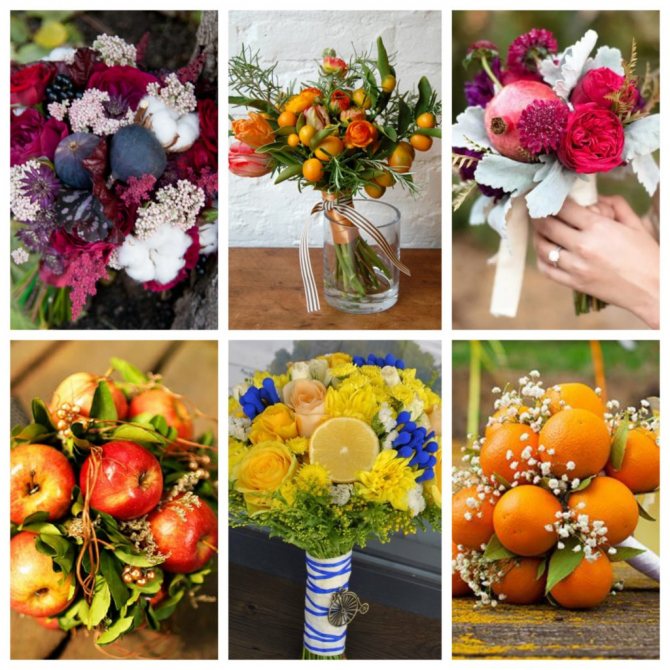

Florists use a variety of local and exotic fruits in their bouquets. Floral arrangements with pomegranate, figs and bergamot look interesting. Photos of plants show how harmoniously their fruits look in a bouquet.
We recommend professional training in floristic art at the online school of Ekaterina Andryukova. There is a special promo code only for visitors to our site. SL84ECBA88, which entitles you to a 10% discount on the purchase of any product of the florist school.
The promo code is valid only once, so we recommend using it for the most expensive purchase. Then your savings will be significant!
How to make a bouquet and decorate a house or apartment with it is described in detail in the video below.
Experienced florists have long gathered for themselves a collection of photos and names of the most popular flowers for bouquets. These are not only the classic varieties that grow in our flower beds and gardens, but also exotic representatives of the flora from abroad. They allow you to create gorgeous compositions for any celebration and holiday, surprise, amaze with their beauty, bewitch with a pleasant delicate aroma and give positive emotions.
Flowering shrubs
Speaking of creating a white garden or flower garden, one cannot ignore the flowering shrubs that have white flowers.
Spirea
(Spiraea) is a shrub that has gained popularity for its unpretentiousness and abundant flowering. A variety of spirea, blooming in spring, Spiraea vanhouttei is popularly called the "bride". Its sprawling branches bending to the ground are densely covered with white umbrella-shaped inflorescences, consisting of small flowers. Blooms in May-June. There are many more species of this shrub, and in each of them there are specimens with white flowers. Moreover, they have a wide range of flowering periods (from spring to late autumn).
It is impossible to forget about the clouds of the beauty's inflorescenceshydrangeas
(Hydrangea). This shrub will adorn any composition. Let's note the most popular pure white varieties. Treelike - Annabelle, Sterilis. Paniculata - Kyushu.
Everyone knows unpretentious bushes lilac
(Siringa vulgaris), but this does not make her less beloved and attractive. No one is left indifferent by chic cone-shaped inflorescences with an amazing aroma. The variety of varieties with white flowers is simply amazing. These are simple ones - Lebedushka, Monument, Flora. Terry - Zashchitnikam Bresta, Mme Lemoine, Krasawica Moskwy. And also thick double - Pamyat ’o Kolesnikove, d. Alice Harding, Mme Casimir Perier.
Suitable in any type of garden, unpretentious and flowering shrub weigels
(Weigela) will decorate the white garden with varieties Alba, Candida, Black and White.
Erika
(Erica) - an evergreen shrub from the heather family with needle-shaped leaves also has varieties with white flowers. These are Alba, Snow Queen, Golden Starlet, Springwood White, Silberschmelze, Silver Bells and others. It blooms with elongated bells forming an inflorescence-ear. A beautiful plant, but needs a winter shelter.
Very unpretentious shrub snowberry
(Symphoricarpos) blooms in the spring with small white (sometimes pale pink) flowers, but the main thing is that by autumn the flowers turn into white balls-fruits, which retain their decorative effect even with the onset of cold weather. Suitable varieties: Albus, White Hedge, Rivularis.
Erica "Golden Starlet"
Snowberry "Albus"
And even the habitually yellow forsythia
there is an unmatched white-flowered version of Forsythia abeliophzllum.
Kalina Buldenezh
There are varieties with white flowers in hibiscus
(Hibiscus),
jasmine
(Jasminum),
buddleys
(Buddleja),
actions
(Deutzia),
viburnum Buldenezh
(Viburnum Boule de Neige),
rhododendrons
(Rhododendron),
scum
(Cotinus) and in numerous species of the garden queen -
roses
.
Rose - the queen of flowers
Sometimes you don't need to look for an answer to the question of what flowers are used in bouquets for a long time. It is enough to choose a classic solution - beautiful and fragrant roses that are suitable for people of different ages and both sexes.
Experts prefer to compose compositions from varieties that have a dense bud:
- Peony. They resemble a peony, have delicate outlines and predominantly pastel shades (Benjamin Britten, Miranda, Golden Celebration).
- Russian. Varieties of these flowers for bouquets stand in a vase for more than a week, they are stable in cut, emit a stunning bright aroma and are grown according to the technology invented by the Dutch (Golden Ambitia, Floribuna, Nostalgia).
- Kenyan. These are the elite and most common flowers that are added to a variety of bouquets. They are suitable for prefabricated compositions, have a thin stem, various shades and excellent decorative qualities (Ocean Song, Flamingo, Senorita, Red Ribbon).
- Ecuadorian. Such roses are suitable for composing a bouquet of flowers with the names of loved ones and loved ones. Large buds of bright shades retain freshness and pleasant aroma for several weeks (Freedom, Limbo, Movie Star, Wendela).
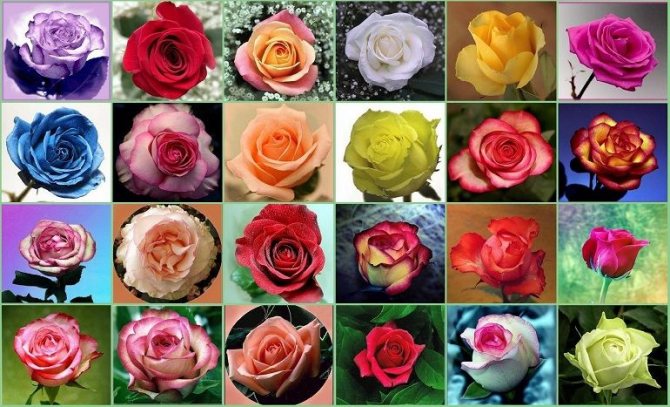

After the florist has chosen the main rose variety that will dominate, he draws up a list of additional flowers for the bouquets. Field daisies, lilies of the valley, alstroemeria, tulips, poppies, peonies, carnations, hydrangeas and lilies go well with beautiful roses. There are other types of flowers from prefabricated bouquets with roses, their photos with names are actively displayed on forums on the Internet.
Room design
Designers, learning the basics of the profession, get acquainted with the theory of color. At the same time, it is always mentioned in the learning process that the shade belongs to the subjective category. Color theory as a whole science makes it possible to explain some of the connections in the "perception-emotion" chain.
It is important for a successful designer to learn to combine colors from different (non-adjacent) groups to create their own designs. Cold and warm shades - that's where the most difficult, but the most successful creative solution. However, the right combination of shades is a matter of both taste and experience.
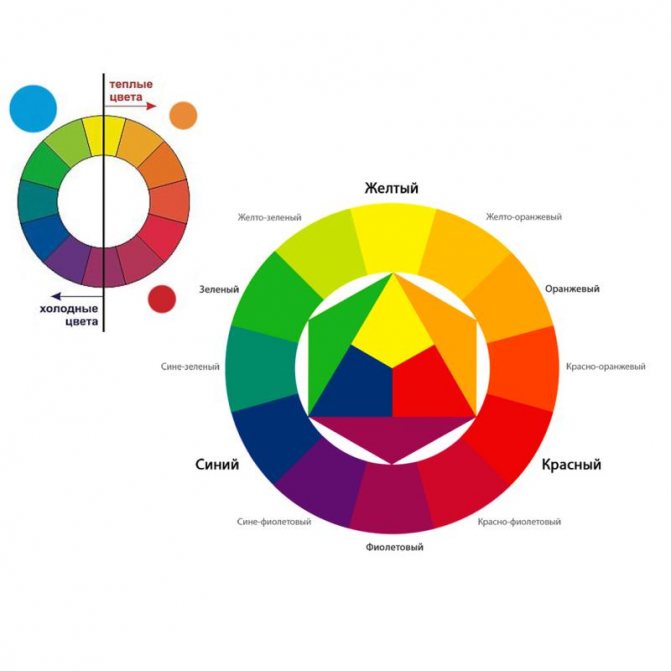

Orchid - a combination of sophistication and sophistication
Such delicate exotic flowers are always presented in expensive exquisite bouquets, photos and names of which will not leave anyone indifferent.
To compose floristic masterpieces, the following varieties are most often chosen:
They are distinguished by large and bright inflorescences. To highlight the beauty of orchids, they are complemented with other varieties of flowers. For example, lilies, crocuses, calla lilies, delicate small roses.
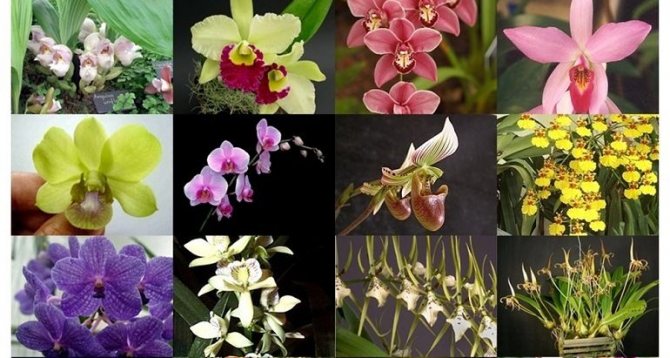

Bulbous
Traditionally, white bulbous flowers are snowdrop
(Galanthus) and very similar to it
white flower
(Leucojum), and the white flower has varieties that bloom not only in spring, but also in summer.
Cute bouquets bloom in April chionodox
, the white color is represented by the varieties Chionodoxa luciliae alba and Chionodoxa gigantea alba. Beautiful large-flowered variety of white
crocus
- Crocus Jeanna D'Arc.
Among the great variety of varieties daffodils
and
tulips
we will present only a few. Daffodils (Narcissus) with white flowers: Beersheba, Mount Hood, Ice King, Poeticus Plenus, Cheerfullness. Tulips: White Liberstar, Cardinal Mindszenty, Daytona, White Parrot, Tres Chic, Spring Green.
Crocus "Jeanna D'Arc"
Tulip "White Liberstar"
White lilies
are also very numerous, I would like to mention such varieties as Appleton, Annemarie's Dream, New Wave, Speciosum Album, White Heaven, Casa Blanca.
Gladioli
(Gladiolus) white domestic selection is so widely represented that it is very difficult to choose several of them. You can name such as "Moscow white stone", "Snow White", "White Bear", "White fringe", "Poplar fluff" and many others.
There are varieties with white flowers and muscari
(Muscári Botryoides Album),
herb fritillaria
(Fritillaria Meleagris white),
garden hyacinths
(Hyacinthus orientalis Antarctica),
colchicum
(plain Colchicum Album and terry Colchicum Alboplenum).
For lovers of decorative bows, we can recommend a new variety. allium
- giant Mount Everest (height up to 140 cm, diameter of white flower balls - 20 cm).
Fritillaria herbaceous
Allium giant "Mount Everest"
If you love exotic plants and are ready to tinker a little, then pay attention to tropical guests, who, by the way, are not very moody.
— Ixia
(Ixia), it will become a worthy decoration of an alpine slide. Ixiae belong to the iris family, bloom in summer. The flowers are like stars about 4 cm, located on a long peduncle-spike in 12-20 pieces. The xiphoid leaves are collected in a funnel. Has a pleasant aroma. Has white-flowered varieties, such as Giant.
— Liatris
(Liatris), its tubular small flowers are collected in a fluffy ear, similar to a bright candle. It blooms in summer and exudes an amazing aroma (widely used in the perfumery industry). The stem is covered with many thin oblong leaves. White flowers will delight you with the Spicata Alba variety.
Ixia "Giant"
Liatris "Spicata Alba"
— Acidantera
(Acidanthera bicolor), it is also called Muriel gladiolus, as it has the same xiphoid leaves as gladiolus. The flower has six pointed white petals with a dark base (most often dark crimson). The flowers are collected in a loose ear, have a pleasant, light aroma. Summer bloom.
We examined some bulbous plants, among them you can choose worthy specimens for decorating a garden in white tones. Just do not forget that most bulbous flowers have a short flowering and require transplanting.
Chrysanthemum - golden flower
Varieties of these flowers are widely used to compose gift bouquets, their names and photos are in many reference books for florists:
Chrysanthemums of pink, yellow and red shades are widespread. They are delivered to flower markets all year round. These are ideal flowers for professional bouquets, their photos and names are pleasing to the eye, and the live composition looks just wonderful. It is worth not fading for several weeks, just changing the water is enough.


Photo gallery - white flowers for the garden
Peonies are a worthy choice for any occasion
Tree varieties of peonies are the most popular decorative flowers for creating festive bouquets, photos and names of varieties can be seen on the Web:
- Song of the Rain;
- Silk Veil;
- Flower dew.
These varieties of peonies are more adapted to our climate. They delight with their flowering, bright petals and delicate aroma for several weeks. In the compositions, the masters most often combine different shades of peonies, for example, bright red flowers with pale pink. The composition is complemented with berries, lavender, tansy.


White flowers in autumn garden
By August, asters and dahlias are woven into the snow-white splendor of the garden. These often needle-like flower hats always amaze with the direct pressure of their petals and the confident general look. Autumn vegetation is not very generous with white colors, but there are wonderful specimens, for example, chrysanthemums.
Asters
Previously familiar flowers for September 1st bouquets are asters, just towards the end of summer and begin their flowering period. By this time, summer plants have already grown old and do not please with their fresh appearance. An annual aster comes to replace it. In order for the white flowers for the garden to have a decent look for bouquets, the soil for planting the plants is prepared and fertilized in the fall. Asters are grown by seeds.
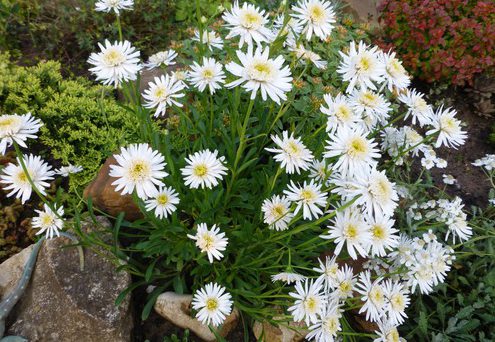

Low-growing white aster in an alpine slide composition
Asters are unpretentious plants. For one small top dressing and watering during dry summer by autumn, they will delight you with beautiful beautiful flowers.
Phlox
Phloxes do not require special attention to themselves, but some subtleties when caring for them should be taken into account:
1. The plant does not like heavy and poor soils, prefers to grow and develop in conditions of irrigation and fertilization.
2. When watering, avoid getting water directly on plant leaves. In this case, the flower may get sick.
3. Do not fertilize phlox with fresh organic fertilizers.
4. When planting, give preference to well-sunlit places. Phlox planting in partial shade is allowed.
For white phlox, it is better to choose sunny places.
Fertilizer is applied 3 times a year: after germination, during flowering, after flowering.
Dahlias
Dahlias are plants that feel confident in the shade. But this has an effect on the size of their colors. Therefore, in order to enjoy the full beauty of the white dahlia, it must be planted in partial shade. A few more features must be considered when breeding this wonderful flower:
1. The roots of the flower do not like excess moisture and, if present, begin to rot. It is necessary to provide drainage when planting a plant and not plant it at the bottom of the site.
2. For the roots of dahlias, freezing is fatal. Therefore, for the winter period, the flower is dug up and transferred to the basement for the winter.
3. Planting plants is carried out in the spring only if the threat of frost has passed.
White dahlias are a real decoration of the autumn garden
Chrysanthemums
In practice, chrysanthemums turn out to be the final flowers of a snow-white summer. They do not even have time to fully blossom and delight others. Therefore, the plant is increasingly grown under reduced technology in artificial conditions. And at the end of summer it is transferred to the garden, buried in the ground with flower pots. In this way, the main result is achieved: chrysanthemum allows you to enjoy the beauty of its flower and aroma to the fullest, until the frost period. And closer to the cold they are transferred to a warm place.
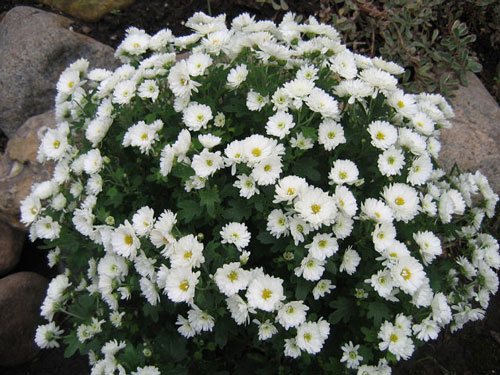

Semi-double white chrysanthemum
Delicate and refined lilies
Before collecting a bouquet of lilies, it is better to study the names and photos of its varieties, because these unusual flowers are not always combined with each other. At all times, the lily was considered a symbol of purity and purity, therefore it is most often chosen to decorate a wedding celebration. There are the following varieties of lilies:
- Cream and white - Dewdrop.
- Pink and Lilac - Sonata.
- Orange - Wave.
- Yellow - Autumn Song.
- Red - Scarlet Sails.
Bright orange, yellow and burgundy flowers go well with delicate light bells, daisies, irises. You don't need to think long about what flowers are added to chic bouquets with lilies. These are sprigs of mimosa, and jasmine, and small bush carnations. Each florist compiles his own list of names of beautiful flowers for bouquets with photos and a detailed description of how to create a unique composition.
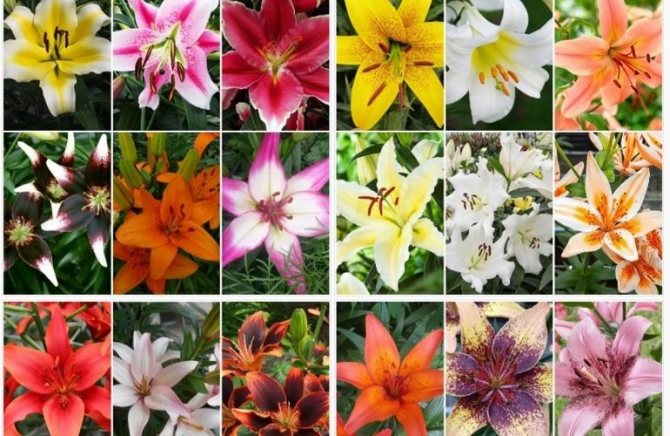

Rhododendron
These pink flowers are quite rare in bouquets, but because of this, the compositions only look more sophisticated. It is worth noting that rhododendrons have a huge number of species. For example, the deciduous rhododendron is also known as Azalea. The flower is harmoniously combined with many varieties of flowers for bouquets, but the best compositions are obtained with the participation of lilies, orchids and lilies of the valley.
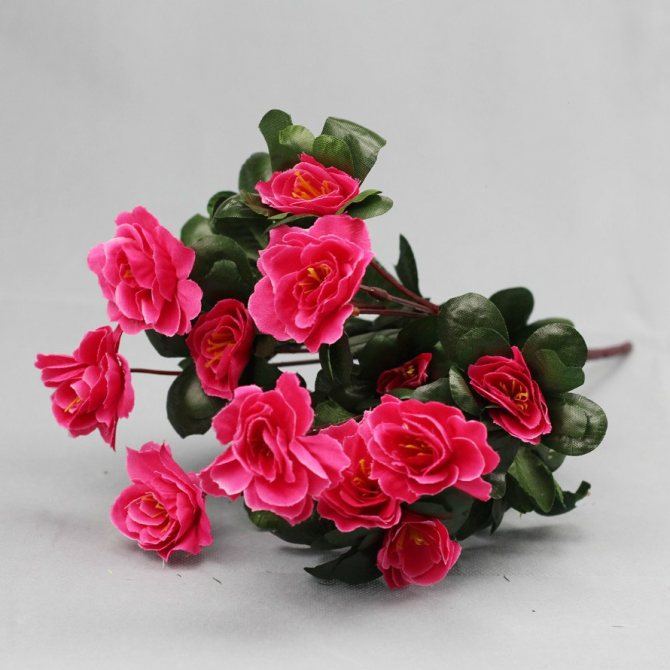

Azalea is a symbol of femininity, meekness, fragility, devotion. It is customary to give rhododendron to a girl before an unwanted separation. Probably, it is because of this that they are rarely found for bouquets. The giving person says to the recipient the following: “Take care of yourself without me”, “I'm sorry that everything turned out like this with us”.
Bright spring tulips
These lovely autumn fresh flowers are ideal for composing any bouquet, both for a man and a lovely lady, photos and names of all kinds of hybrids help to create an ideal composition:
- Rembrandt are distinguished by bright colors.
- Fringed grows with special needle-fringed petals.
- Parrot varieties have flowers that resemble large bird feathers.
- Lily-colored tulips are distinguished by thin elongated petals.
- Terry varieties are lush flowers that resemble peonies.
These flowers are ideal for composing a wedding bouquet, their names and colorful photos prove that tulips are combined with many other flowers and have excellent decorative qualities. They can be grown in your own garden to create true floristic masterpieces on your own.


How to make a good bouquet?
A correctly selected flower arrangement in a beautiful package will be a great gift for any person.However, in order to create a really beautiful and unusual bouquet, it will not be enough just to see the photo and the name of the flowers for the bouquets, then choose the option you like and purchase it in the store. A beginner florist should know which flowers are combined with each other, and which ones are better not to be combined in one bouquet. You also need to know various techniques and methods of connecting the buds to each other. What can we say about all sorts of accessories, which are often very difficult to attach to a bouquet.
However, such a task seems incredibly difficult only at first glance. If you look into the details in more detail, it turns out that what the florist needs is patience and creativity. It is also recommended to know about the hidden meanings of each flower, since some of them are suitable for weddings, the second for an anniversary gift, and others for a declaration of love. In addition, the color palette should be vibrant and harmonious, but it can be difficult to achieve a good match.
Carnations are divine flowers
Experienced breeders have bred many varieties of carnations to create rock gardens and beautiful flower beds. Modern hybrids of carnations are excellent flowers for the formation of luxurious bouquets, their photos with names are proof of this:
- Gravyanka - this is the name of small flowers in bouquets, they are often decorated with borders, rockeries and the adjacent territory.
- Lush carnations thin out a delicate pleasant aroma, small rare inflorescences complement with other flowers.
- Shabo - velvety flowers, distinguished by exquisite beauty. They retain their shape and attractiveness in finished compositions for a long time.
- Turkish or bearded carnations look great in mono bouquets along with wild grasses and large flowers of delicate tones.
- Chinese carnations are captivating and mesmerizing at first sight. Their petals have corrugated edges.
Beautiful carnations in any floral composition radiate a unique charm. Darker varieties are suitable for creating masculine bouquets.
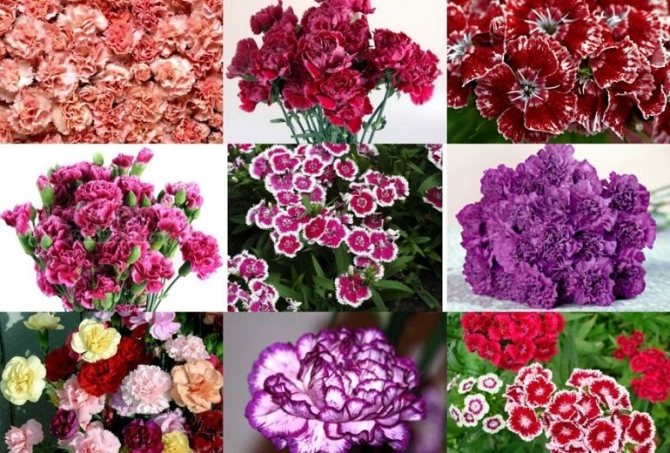

White annuals
Annual white flowers can be found everywhere. Aster
(Callistephus),
marigold
(Tagetes),
verbena
(Verbena),
carnation
(Dianthus), annual
delphinium
(Delphinium),
Iberis
(Iberis),
cosmeya
(Cosmos),
linen
(Linum),
Snapdragon
(Antirrhinum),
lupine
(Lupinus),
matthiola
(Matthiola),
scented tobacco
(Nicotiana alata),
salvia
(Salvia),
escholzia
(Eschscholzia) and many other flowers have white-flowered varieties and species.
Delphinium
Mattiola
We tried to make a small overview of the plants that will serve as the basis for creating your white garden or flower garden. Start with a simple flower bed and if you like the nobility of the white color, then you can add small architectural forms to create a romantic corner on the site. And the highest stage of "white flower magic" will be a beautiful lunar garden.
The season of white flowers opens, of course, snowdrops, and among them the very first - snowdrop
snowy (Galanthus nivalis).
Almost immediately, the "white marathon" includes spring white flower
(Leucojum vernum).
Plant these bulbs in the sun, in the shade or in a rock garden and do not forget to place at least a small group of them at the gate. You will soon see that these modest, unassuming flowers can cheer you up from the very first steps on the site.
The flowering of white flowers lasts at least 3-4 weeks. In addition, they will indicate that the soil has warmed up enough at the depth of sowing the seeds and it is time to sow cold-resistant flowers and vegetables.
In the earliest terms, in April, white blooms with a slightly noticeable blue stripe on the petals scrub
Tubergen (Scilla tubergeniana) up to 8 cm high.
At the same time, in the first decade to mid-April, they bloom crocuses
... In the southern regions, the flowering of crocuses is not interrupted all year round: after the late, autumn flowering, early spring appears almost without interruption. The large-flowered crocuses of the Dutch hybrids group are especially attractive.The best of the white varieties of this group is the pure white crocus "Joan of Arc" and the crocus "Pickwick" - white with purple veins.
White dwarf blooms at the same time muscari
Album as well as white
chionodox
varieties "Alba". Chionodox bloom can be obtained in a pot on the windowsill, and already in February-March, if several bulbs are planted for distillation in September.
In early May, they begin to bloom daffodils
... Most varieties of this magnificent unpretentious perennial, without which almost no garden on different continents can do, have a pure white color or a combination - a combination of white color with yellow, pink, orange and even red.
For lovers of the white palette, representatives of the Tubular Daffodils group - "Mount Hood" and the super-early dwarf variety "W.P. Milner" (height 15 cm) are best suited; from the group of Large-crowned daffodils, the unsurpassed variety is Desdemona, which has taken root in Russian gardens, as well as Mrs. R.O.Backhouse ”with white petals and a pink bowl. Interesting are Tacetny and Triandrus (three to five flowers on one peduncle) daffodils, among which the variety "Thalia" can be distinguished.
Fragrant daffodils of the Poetic group remain very popular. Late daffodils of the Double White Poeticus variety with double white flowers of an exotic star shape are especially popular. Of the white daffodils suitable for winter and early spring forcing, it follows about (the date of forcing on January 25), double "Cheerfulness" (set on February 9) and a poetic daffodil with a red crown "Actaea" (January 25), whose flowers are blooming 19-24 days after setting for distillation.
Along with daffodils bloom tulips
... The first (not counting species) to bloom are terry early white tulip varieties "Snowstorm" and "Snow Queen". Terry late varieties such as Mount Takoma are surprisingly good.
White tulips surrounded by blue or pink forget-me-nots look especially attractive. The snow-white tulip varieties "Snowstar" and "Hibernia" are suitable for forcing, the terms of setting for distillation of which are January 1 and 15, respectively. The duration of forcing is 21 and 26 days. White fringed tulips “Swan Wings” and parrot tulips “White Parrot” are very decorative.
Spring is the time for flowering hyacinths
... The Dutch hyacinth hyacinth (Hyacinthus orientalis), which have dense, wax-like inflorescences of very fragrant flowers, are very popular in Russian gardens. Among hyacinths, Carnegie and L Innocence will undoubtedly attract attention. "Carnegie" is suitable for forcing: the earliest date for forcing is January 6, after 10-14 days a pure white inflorescence blooms.
Bloom in May anemone
: oak spindle (Anemone nemorosa) with white, outside, slightly pinkish or lilac star-shaped medium-sized flowers, forming a dense carpet up to 25 cm high; Amur spindle (A. amurensis) up to 20 cm high, with pure white flowers; forest spindle (A. sylvestris) is a well-known species in culture; it has hybrid forms and varieties with larger and double flowers. It blooms a little later than the previous species - at the end of May-June, the flowers are white, rather large (up to 4 cm in diameter). Anemones are especially decorative in landscape plantings, when they form large free groups, but they are very attractive both in rock gardens and in borders.
| Crocus | |
| Narcissus | Tulip |
| Hyacinth |
Garden decoration in May, of course, are lilies of the valley
, which are not accidentally called May (Convallaria majalis). On an arcuate peduncle (height up to 25 cm) in the third decade of May (as a rule, on May 22-25 in the Moscow region), snow-white fragrant bell flowers begin to bloom alternately. The number of flowers on a peduncle sometimes reaches 10-15. Interesting large-flowered varieties of lily of the valley (for example, "Fontin" s Giant ") and terry" Prolificans ".
Few gardeners know that lily of the valley lends itself to forcing. For example, for the New Year or Christmas, you can get flowering lilies of the valley if you plant the rhizomes in compost in mid-November, keep them in the cold for a while, and then put them for distillation. It is very important that the rhizome has a flower bud, not just a leaf bud. Select for forcing pieces of rhizome with large buds with a rounded apex more than 0.6 cm in diameter.
Early flowering representatives of the flora, which form the white palette of the herbaceous part of the garden, include Pushkin
(variety "Alba"), very effective in close-up group plantings. Unpretentious and hardy Pushkinia grows rapidly, forming whole clumps. Just like blueberry and crocus, it is suitable for forcing.
Blossom in May hazel grouse
... In addition to the imperial hazel grouse (red, orange and yellow), the unsurpassed qualities of which have become known to most flower growers only in recent years, the hazel grouse (Fritillaria meleagris) is widespread in the garden culture. First of all, it stands about with pure white large drooping bell-shaped flowers about 4 cm long. This hazel grouse is easy to grow, it is good in the foreground of the border, on an alpine hill, in landscape plantings. Plant height up to 30 cm. This variety can be propagated by dividing the nest 4 years after planting.
A modest May garden decoration - Kupena multiflorous
(Polygonatum multiflorum), which is popular with many gardeners, although this plant is less common than it deserves. Located 1-4 in leaf axils on drooping pedicels, medium-sized white flowers with a faint greenish-white tint appear in late May-early June. And extremely decorative, two-row, pointed-oval leaves of the kupena located on an arcuate stem will decorate the garden until the frost. The stems form a loose thicket up to 70 cm high; the plant feels better in partial shade, tolerates frosty winters with little snow. Kupena requires almost no maintenance: if only the soil is fertile and sufficiently moist.
Bloom in May-June decorative bows
, among which the triangular onion (Allium triquetrum) with many drooping white bell-shaped flowers. This bow about 20 cm high will decorate the foreground of the border and alpine slide with a white spot of color. The onion is so unpretentious and multiplies so quickly that it requires restriction and strict control, otherwise after a few years it threatens to turn into a weed.
It is impossible not to mention irises
both rhizome and bulbous, capable of decorating the most demanding garden. In May-June, bulbous irises of the Reticulata group bloom, which are perfectly amenable to forcing. They reproduce easily by dividing their nests after 4-5 years. Such varieties of iris as "White Excelsior", white with yellow specks, and "White and Violet", which for many years will bloom profusely not only in the sun, but also in partial shade, enjoy well-deserved popularity.
From early spring, the close plan of flower beds can be decorated with profusely blooming daisies
... Snow-white double daisies of the Scheeball variety (up to 4.5 cm in diameter) are especially good, as well as Goliaph with dazzling white double large flowers (up to 8 cm in diameter).
In the first decade of June, when the danger of spring frosts has passed, tuberous begonias
often already with buds. Fans of the white range will be interested in the varieties of begonias "Diana Wynyard" and "Fairy Light" with snow-white petals bordered by a red stripe.
True, you will have to tinker with tuberous begonias: in October, after frosts, they are dug up, in winter they are stored in a cool place (10-12 ° C), in the sand, and in April they are grown first at home, and on June 10-15 they are planted in the ground. But if you are not afraid of difficulties, you will be more than gifted with a rapid and long flowering - up to 3.5-4 months in the middle lane, enjoying the spectacle of large double flowers (up to 15 cm in diameter).
| Chess hazel grouse | |
| Iris | Begonia |
In May-June, blooming rages lilac
... Particularly popular is the so-called "French" lilac - varieties and hybrids bred by the father and son Lemoine. The best varieties are white double lilac (flowers up to 3 cm in diameter, collected in large inflorescences up to 20 × 8 cm) "Alice Harding"; "Vestale" with simple white, but more fragrant flowers, collected in pyramidal inflorescences up to 20 cm long.
A very popular variety of Lemoine lilac "Jeanne d" Arc "with fragrant double flowers (diameter 2.5 cm) in inflorescences 20 × 10 cm, as well as the variety" Mont Blanc ". Favorite domestic varieties of lilacs are, as a rule, bred by the Russian originator L.A. Kolesnikov, more than 100 excellent varieties. Among them is the snow-white Talina Ulanova with flowers (up to 2.7 cm in diameter) with a pronounced aroma.
Chubushnik blooms in June, followed by blooming lilies
... These beautiful flowers captivate with regal beauty and posture. The most popular of all the pipe lilies, by far the fragrant large-flowered royal lily (Lilium regale); Of the oriental hybrids (they bloom later, in July-August), the domestic variety "Siberia" deserves attention, which stands out for its elegant bright red stamens. Among the Asian hybrids, it is necessary to note the snow-white variety "Sterling Star".
At the beginning of summer, white astilbe bloom, bells
(for example, peach-leaved bell, "Snow White" variety); unpretentious fragrant begin to bloom for a long time
phloxes
paniculate, one of the best snow-white varieties of which is the early-flowering "Schneepyramide".
A large compact inflorescence of white flowers of the phlox variety "Hochgesang" will delight you until the beginning of September. This phlox puts up with partial shade, easily tolerates the division of the bush in the second half of August, continuing to bloom in a new place as if nothing had happened. But an experienced gardener does not allow a young delenka to bloom: the plant must have time to take root, form new roots and prepare for winter. So you should cut the flowering stems to a height of 7-10 cm.
Not widespread enough, but it is able to decorate any rock garden, areas with sandy dry soils perennial (Phlox subulata). Its creeping, easily rooting stems 15-20 cm high with flowers 1-2 cm in diameter form dense sods. A profusely blooming carpet will decorate the garden in mid-May and, under favorable conditions, in autumn.
In June-July, the daisy blooms, or garden chamomile
(Leucanthemum, or Chrysanthemum maximum).
In July, one and a half month flowering is completed with early, medium and late flowering peonies
... Of the hybrid peonies, the most interesting are the non-double varieties "Sonet" with large white flowers with a pink tint and the scent of a tea rose and "Gold Standart" with white petals and a bright yellow center. A good semi-double variety "Minne Shaylor" with lush white flowers. Among the terry peonies, the White Parus variety with white crown flowers with a slight yellowish tint deserves attention. The height of the bushes of the last two varieties mentioned is 75-80 cm, for the "Gold Standard" - up to 100 cm (flower diameter 15-16 cm).
In July, a wonderful perennial blooms - eremurus
(shiryash). It is rarely found in Russian gardens. Its rhizomes come to our country mainly from Holland and other countries with a mild climate, and gardeners are afraid: will it freeze out, will it bloom in our area.
Based on our own five-year experience, we can say: it will not freeze if, before the onset of frost, the soil is covered with compost or covered with leaves at the site of the Eremurus planting. In a year with an extremely cold spring, Eremurus did not bloom, but then each plant released 2 peduncles with a huge number (up to 200-250) of star-shaped flowers on each.
More often on sale there are eremurus with soft pink, orange or pale yellow flowers; for lovers of white, the Himalayan Eremurus (Eremurus himalaicus) is offered: this very hardy, relatively unpretentious plant can endure snowy winters almost without shelter.
Eremurus Himalayan (height 120 cm) up to half of the inflorescence is strewn with abundant white flowers. Duration of flowering is 2-3 weeks, until the upper buds are completely dissolved. Eremurus retains decorativeness in cut for a long time, looks good in bouquets in floor vases. Decorating halls for diplomatic receptions, important meetings, as a rule, they rarely do without mono-bouquets from Eremurus or mixed compositions with them.
Bloom in June clematis
... The earliest flowering (from June 10-15) in the Jackmanii White hybrid with flowers (diameter 12 cm) of a bluish, as if burnt-out shade. On last year's shoots, it blooms with semi-double flowers, often of irregular shape; on the shoots of the current year - simple inflorescences.
Snow-white double flowers (diameter 10-13 cm), reminiscent of a double dahlia, at Clematis "Lucie". Of the domestic ones, it is about with white petals (up to 15 cm in diameter) and bright stamens. Snow-white star-shaped flowers in the varieties "VV Sharonova" and "Polar". Blooming of clematis continues until the end of September.
| Lilac | Lily |
| Pion | Eremurus |
| Phlox | Clematis |
Blooms in July swing
paniculata (Gypsophila paniculata), capable of giving delicacy and elegance to any bouquet. It has small flowers (0.5 cm), but there are so many of them that even only one branch of this graceful perennial looks like a light white cloud. Larger flowers in annuals
gypsophila
graceful (G. elegans).
It is impossible not to mention the perennial delphiniums
... Most often, they are dominated by blue-blue and lilac-violet color of flowers, but among the hybrids there are also white (simple and double), as well as one- and two-colored. Delphinium is easy to propagate by seeds, it is only important to keep them germinating before planting (best in the refrigerator).
Blooms in August acidander
(Acidanthera), also called scented gladiolus. This majestic beauty is a big sissy. It blooms regularly in regions with a mild climate, in the middle lane - only in very warm summer, therefore it is better to grow it as a pot culture, taking it to the country in the summer months and at the same time remember to bring it into a film greenhouse on cold days. However, your efforts will be rewarded when you see up to 10 white flowers on the peduncles, graceful and extremely spectacular, decorated in the center with a purple pointed spot.
Less whimsical galtonia
whitish (Galtonia candicans), similar to a giant hyacinth. This culture is frost-hardy and can winter in the middle lane with almost no shelter. Its bell-shaped flowers, snow-white, sometimes with a slightly noticeable greenish tinge, will delight you in late July-early August if the bulb is planted in spring. Belt-shaped leaves reach 60 cm, bell-shaped flowers are loosely located (up to 20-25 pieces) on the peduncle (up to 90 cm long). In the Moscow region, galtonia perfectly tolerates snowy, not too harsh winters and can bloom annually for 3-4 years, but with the first severe frosts, especially before snow falls, it invariably dies.
Another exotic plant whose bulbs can be found on the Russian market is cardiocrinum, or lily giant
(Cardiocrinum giganteum), which will pleasantly amaze anyone with huge tubular white flowers (15 cm in diameter and up to 17 cm long) with red strokes in the pharynx. The drooping fragrant flowers of the giant lily (up to 20 pieces per inflorescence) are located in the upper part of the peduncle, reaching a height of 2.5 m. The cardiocrinum bulbs are planted in September-October in moist acidic soil, preferably in a slightly shaded place. Peduncles appear in the spring after a year or two. Baby bulbs will take more than three years before flowering. For the winter, lilies must be covered.
Don't pass by perennial aster
both tall and dwarf. The unpretentious, low-maintenance alpine aster (copt "Albus"), about 15 cm high, quickly grows with a white carpet, decorating the rocky hill and the near plan of flower beds.
Think of the highly decorative Erica (the snow-white variety "Springwood White" is especially good).
Plant in your flower garden Iberis rocky
(height up to 10 cm) with white corymbose inflorescences that cover it like snow in spring during flowering.
Don't forget the white annual aster, lavater, lobelia. And, of course, white roses, these unsurpassed queens of the garden, can become its most expensive adornment.
Of the shrubs, lovers of the white garden can be recommended buddley of david
(Buddleja davidii) White Cloud cultivar. Buddleya grows quickly, is very unpretentious, it will delight you with abundant flowering from July to October with arrow-shaped inflorescences collected from crumble flowers with a honey aroma.It needs regular and strong pruning: every year in March-April, last year's growths are shortened to a height of 5 cm.If this is not done, the buddleya will stretch up to 2-3 m and all the forces will be spent on the growth of shoots, at the ends of which you will see only single inflorescences.
For lovers of Japanese quince, or chaenomelesa
(Chaenomeles japonica), which can please not only with beautiful flowers, but also fragrant fruits, we can recommend the snow-white variety "Nivalis". Chaenomeles is unpretentious, but it is important to immediately put it in a permanent place and not replant it in the future. Even at a young age, he can hardly tolerate a transplant: the overgrown powerful roots cannot be preserved without damage in full.
For lovers Potentilla
shrubs can be recommended varieties "Abbotswood" and "Manchu" (bushes height 75 and 30 cm, respectively), blooming with medium-sized white flowers from June to September.
To decorate the background of flower beds and as a hedge are good: spirea wangutta
(Spiraea x vanhouttei), spirea sharp-toothed (S. xarguta) and nippon spirea (S. nipponica), blooming in spring.
| Aster |
For many, white is a symbol of purity, joy, carelessness and childhood.
But if in everyday life it is considered not particularly practical, then in the garden, in pots and on flower beds, snow-white flowers are an ideal solution. Landscape design, made in white colors, will allow you to achieve a visual increase in space and a sense of freedom.
Exotic and rare flowers
Not all bush flowers for bouquets, the colorful photos and names of which we have considered above, can surprise a finicky lady or an artsy gentleman. Rare flower arrangements from the following options are more suitable for them:
- Gloriosa is an exotic beauty for unusual and striking solutions.
- Amaranth is an amazing plant with hanging inflorescences.
- Brassica is an unusual flower for wedding arrangements and festive decorations.
- Celosia - similar in texture to a carnation, often complements other plants in voluminous and lush compositions.
- Spherical craspedia will certainly become the central flower in the autumn and winter composition.
- Tillandsia Xerographica is a rare flower that looks like a jellyfish. Its swirling grayish long leaves look great in vintage bouquets.
- Echeveria - goes well with dahlias, often used for winter bouquets with eucalyptus and dried flowers.
- Astilba is a romantic ornamental plant with elongated, fluffy and lush inflorescences.
Rare garden and wildflowers will undoubtedly enchant and leave a lot of pleasant emotions and impressions. With proper care, they stay in the vase for a long time.
Teaching children to know colors
Based on associations and research on the effects of color on brain and motor activity, psychologists make their recommendations for children's rooms. The room where the child plays or sleeps should not be painted in bright colors. Red and juicy orange stimulate activity. The child is naturally active, so no additional stimulus is needed in this case. Dark colors (blue, green, purple) can be overwhelming. Therefore, their use is also undesirable.
The color of the children's room should be associated with the ideal childhood. For example, it can be peach, soft light green, muted yellow. Bright accents will be added automatically. Children often paint - their creativity will certainly decorate the room.


Original color combinations
Florists are increasingly using blue, purple and blue flowers when creating their creations, which are suitable for a bouquet for both a man and a woman, we will consider their names and photos below:
- Spathiphyllums are small decorative flowers that are most often presented in baskets.
- Scylla or Proleski are fragrant spring primroses similar to blue snowdrops.
- Liverworts or coppices are spring flowers of bright blue color, they are arranged in a basket or in a large leaf with lilies of the valley or other small primroses.
- Mouse hyacinths or Muscari are small flowers for prefabricated and mono-bouquets, radiating warmth and tenderness.
- Freesias are one of the most original flowers, embodying fragile charm and sophisticated aristocracy.
- Lilies of the valley are more often found in nature in white, but there are blue and pale purple varieties.
- Lilac is the classic twig of this spring flower, which is sure to be a focal point among smaller plants, or the perfect complement in combination with tulips or peonies.
- Crocuses - these voluminous and bright primroses are a symbol of cheerfulness and the onset of the first days of spring.
- Clematis is a climbing ornamental plant with small blue flowers, which are often decorated with floral arrangements for the bride.
- Veronica - small flowers, similar to an ear, have different colors, from dark blue to pale blue.
- Cornflowers are shy and simple flowers - the perfect solution for creating a voluminous field bouquet.
Of course, this is not the whole list of colors that have a purple, cyan and blue tint. Breeders have long bred hybrid varieties of roses, hydrangeas, chrysanthemums, orchids, forget-me-nots, delphiniums, which will emit their “heavenly” color next to pale pink, yellow or red flowers, live branches of berries or ornamental grasses.
For many centuries, flowers have been one of the main decorations of various holidays. And to this day, in the world of abundance of various decorative products and elements, it is flowers that are the leaders among the most memorable gifts. After all, an elegant and delicate bouquet is an excellent present for a beloved woman: mother, wife, sister, girlfriend. And flowers look especially beautiful when they are collected in a bouquet.
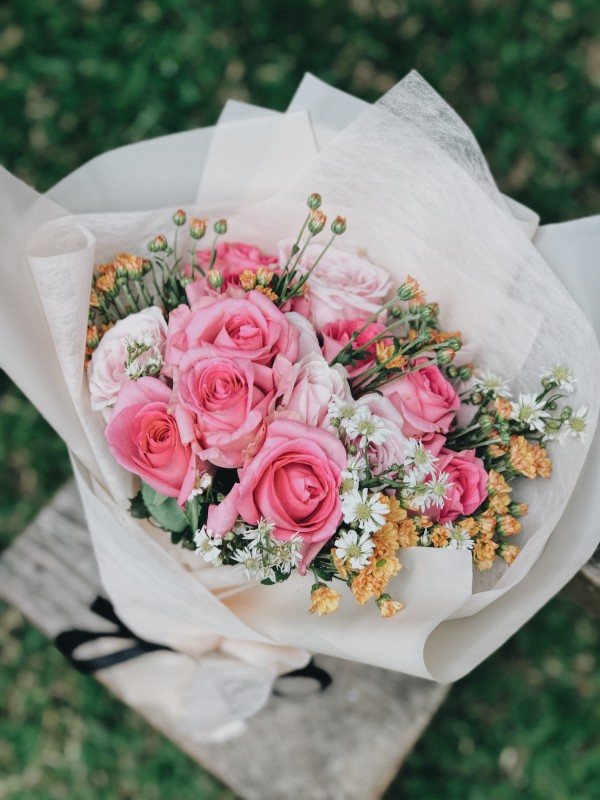

Features of flower beds of white perennials
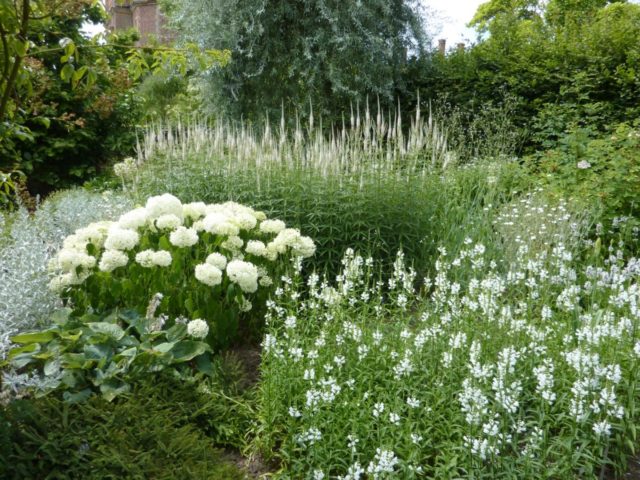

Each color has its own magic, evokes certain emotions and states of mind. But, perhaps, most people associate only one with lightness, elegance, grace and purity - white. Beds of white flowers visually expand the territory of the garden, bring a feeling of lightness and airiness. Landscape designers advise to design them in recreation areas, near a gazebo or a pond. Then, while walking, you can enjoy the splendor and radiance of white to the maximum, the state of mind will become more calm and peaceful.
However, it is a mistake to think that it is quite easy to arrange a one-color flower bed. With a competent design approach, one should take into account both universal tips for creating flower beds, and recommendations that will help to harmoniously embody the idea of monochrome.
When developing a flower bed project plan, you need to take into account the following nuances:
- White flower beds look favorably against a contrasting background of hedges or mowed lawns. But you should avoid light-colored buildings and fences.
- When choosing white perennials, one should take into account their requirements for soil quality, illumination, and watering frequency.
- Perennial plants should make up at least 50% of the total number planted in the flowerbed. Annuals will be an important addition as they have earlier and longer flowering periods.
- In the structure of a monochrome flower garden there should be 3-4 tiers. Ornamental grasses should be actively used in the lower one, and vines, shrubs or trees in the highest.
- Plants with different shapes of flowers and leaves should be placed in the neighborhood in order to avoid visual monotony.
- It is recommended to plant at least three copies of the same species.
- It is necessary to take into account the time of plant budding. At least two species should bloom on the flowerbed at the same time.
Attention! In the first year, it will be possible to create only a "test sketch". The result can be appreciated not earlier than after 2 seasons, but to see all the splendor after 3 years.
Bouquet rules and algorithm
Despite the seeming complexity, anyone can make a stunningly beautiful bouquet of flowers with their own hands. But for this you need to know the basic elements of the technique of drawing up a bouquet and have a desire to bring the matter to the end.
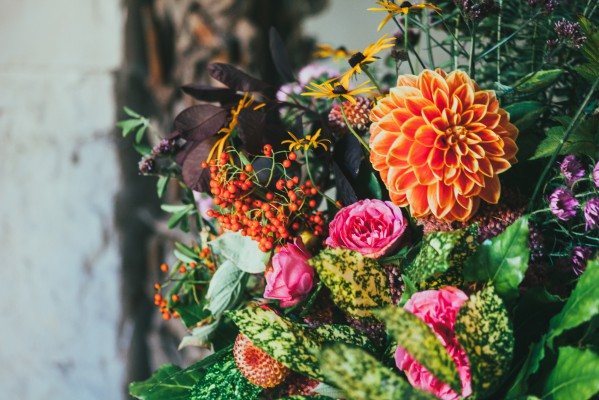

The following tips will help you make a bouquet of any flowers like a real florist or designer:
- Observe harmony. For stylish bouquets, overload is unacceptable: when making a composition with your own hands, it is not recommended to use many varieties of flowers, as a rule, two or three types are enough for a bouquet and, if desired, a little greenery.
- It is impossible to create an impressive composition with a large number of plants, since the main thing in this matter is to choose the right bouquet flowers, colors and build a harmonious composition, otherwise the result will be lurid and overloaded.
- To make the bouquet last longer, you need to cut the flowers with a pruner or knife. Scissors are not recommended.
- Remember that there are bouquet flowers that cannot be combined. The fact is that some flowers, due to the peculiarities of the chemical composition, can have a detrimental effect on each other. Therefore, you cannot combine lilies of the valley, daffodils, orchids, tulips, carnations, lilies.
- Choose the right shape and size. These parameters play an important role, so you should pay attention to the recommendations from experienced florists: it is better for women to give rounded compositions, and for men - elongated ones, for weddings - small sizes, and for birthdays - voluminous ones.
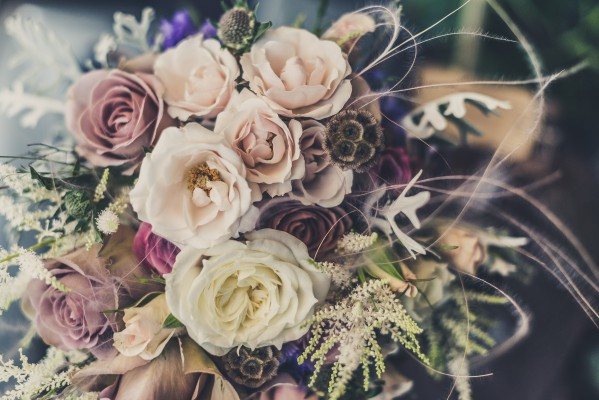

According to the advice of experienced florists, when decorating a bouquet with your own hands, it is important to adhere to the following algorithm:
- First of all, decide on what kind of composition you will make.
- Then decide on the shape.
- After that, choose the color scheme of the composition.
- Next, decide on the number of bouquet flowers and the total volume of the composition.
- After that, you can harvest flowers: if you cut the flowers yourself, it is best to do it at an angle and then immediately put it in the water. But if flowers from the store or those that were cut some time ago will be used, then they need to update the cut. Such manipulations will help the composition to last longer.
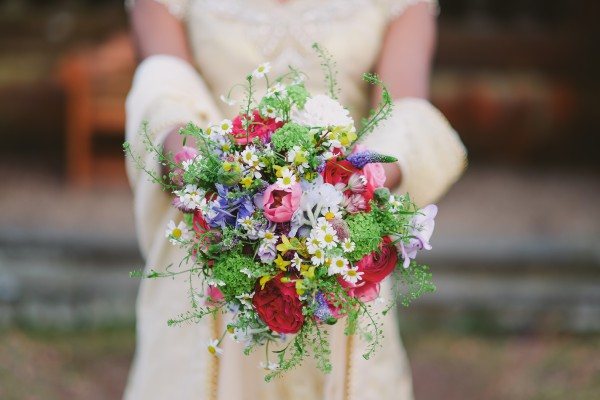

The importance of color in marketing
In the modern world, selling things has become an art with fine lines, serious research and psychological tricks. Work on the visual perception of the product is defined as the most important criterion for the successful sale of products. 93% of buyers are guided by the appearance of the packaging if they purchase a product for the first time. 85% of people take from the shelves those bags, the color of which matches the product and they personally like.
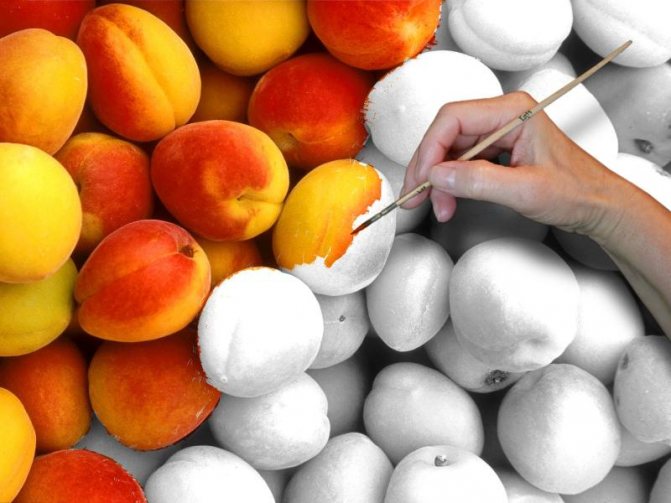

Research has shown that color schemes are not universal. That is, the same shade causes a different associative array in different nations. In particular, the following color characteristics are true for North Americans:
- yellow - youth, optimism. Optimal use: showcase color, to attract attention
- red - energy. It is used for total sales;
- blue - trust, safety. In this region, banks and large offices are painted with it;
- green is a relaxing color. Associations with wealth make it in demand in business;
- black - glossy, powerful. Optimal use: promotion of luxury goods;
- orange - aggression. Convenient as a call to action;
- pink - romance, femininity. Used as a way to attract clients;
- purple - peace, pacification. The use of purple is justified in the anti-aging beauty products industry.
The best flowers for bouquets
Perhaps, you can make interesting compositions from almost any flowers in the world, but there are the most common flowers for bouquets, which are convenient to work with and for which many instructions and advice from experienced florists have been written.
Of course, there are a huge number of color names that are easy to get lost in. But the most popular flowers for bouquets are these types:
If you are unfamiliar with some of the names of these flowers, then for sure you have ever seen them in the garden, in a flower shop, or in a photograph. Let's look at the features of making bouquets with our own hands from the most modern ideas of fashionable flowers. Useful tips, instructions, pictures, videos are waiting for you.
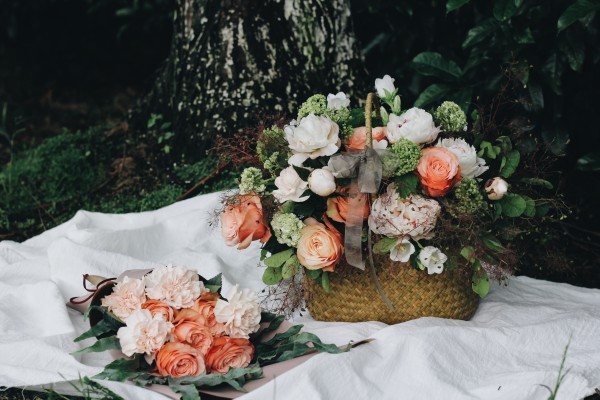

Roses
Roses look great both in the garden and in a bouquet, it is not for nothing that they are called the queens of the flower garden.
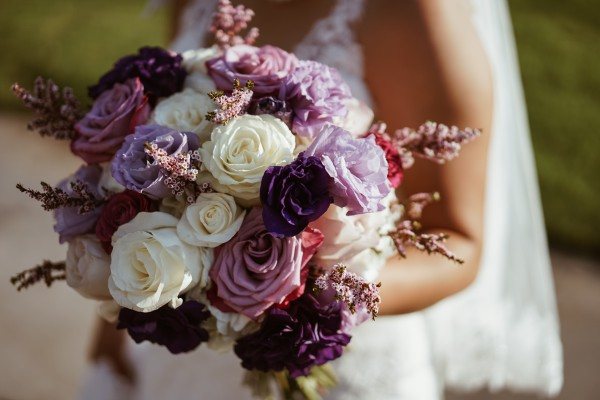

Tips for decorating a bouquet of roses with your own hands:
- Lilies, lilacs, calla lilies, lavender, hydrangeas, alstroemeria, gypsophila are perfectly combined with these flowers.
- Roses are wonderful flowers that can be combined in various plants, but it is not recommended to add tulips, poppies, carnations, delphiniums, lilies of the valley, daffodils to bouquets with roses.
- For packaging, do not take too bright or flashy materials.
Video: a bouquet of roses with your own hands.
Shades of yellow
Blonde is associated with blondes and their hair color. The name comes from French, it translates as light brown, golden, reddish, blond. It is all these shades that the blond has absorbed. Light, with a yellowish-gold sheen - this is a more accurate verbal description of this color. Until the 19th century, the word had a different designation: special laces were called blondes. These laces were made from golden raw silk. Later it was allowed to add white or black to the thread.
The "giraffe belly color" really resembles the color of the animal's coat in this area. It is defined as a combination of two shades: reddish yellow with light brown. Additional names are “giraffe in love” and “giraffes in exile”. The history of its appearance begins in 1827. A new guest has appeared in the local Botanical Garden - a female giraffe. It was sent as a gift by the Viceroy of Egypt.
From the French word for "straw" comes a pale yellow hue called Fawn. It is sometimes described as a dull yellow or pink-beige, with a lot of yellow. Dahl identified it as straw. A horse with wool of this color will be called salty or isabella, a dog - a sexual one, a pigeon - clay.
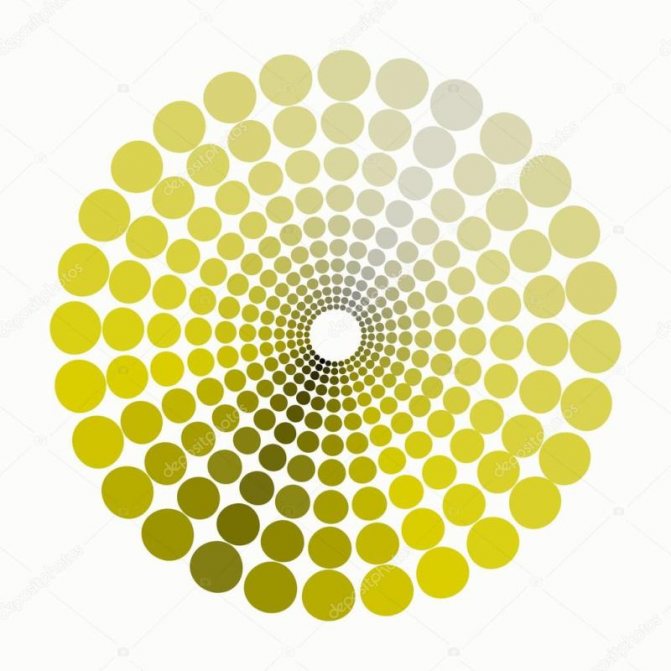

Summing up
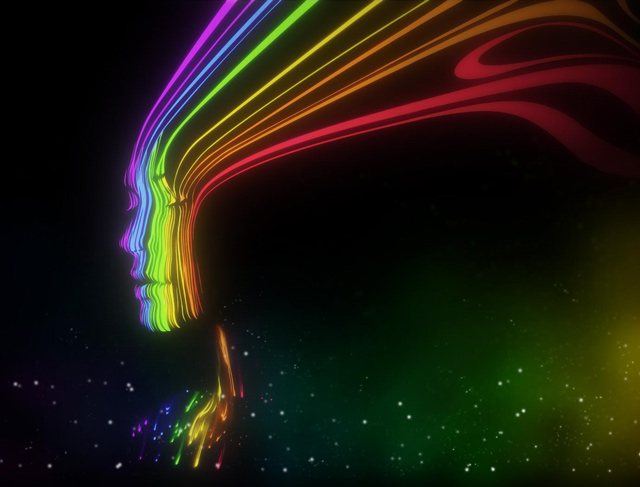

Based on the information contained in the article, we can conclude that the concept of color is a rather broad term that includes many different features and distinctive characteristics by which it can be distinguished and analyzed. This qualitative parameter of all objects that emit and absorb light waves surrounds us everywhere, for example, the colors of flowers, paints, animals, industrial materials, chemicals and much more. They also have a significant impact on a person's daily life, as they have the psychological specifics of the impact.
Nasturtium
Nasturtium (Tropaeolum) came to Europe from Latin America and immediately won the people's love. Nasturtium has another name - capuchin.
This flower is used in garden landscaping. Many growers plant nasturtium with cascading shoots in pots, thus decorating balconies or verandas.
Nasturtium is a flower that you can safely experiment with. With its help, they mask unattractive areas of the garden, create coziness in gazebos and on verandas, and decorate arches.
Gatsania (gazania)
Gazania was brought to Europe from Mozambique. Perhaps that is why the people call it African chamomile. Gatsania's bright flowers open at noon, which is why it got another name - the midday sun.
Today there are about 40 species of this unusual chamomile.
Currently, gatsania has become more common in front gardens, in flower beds and in rabatkas.It is widely used in various garden compositions, for rocky gardens, alpine slides, borders, carpet flower beds, mixborders.
Scented tobacco
Fragrant tobacco (Nicotiana suaveolens) will not only decorate any garden, but will also delight you with a fragrant aroma. This plant is distinguished by bright inflorescences, it comes in white, pink, raspberry and other colors. A fragrant flower always looks fresh. It is planted in flower beds, rockeries and rock gardens.
Designers sometimes use lemon-yellow Lime Green flowers to create flower arrangements. This color perfectly coexists with many shades of other plants that bloom in the flower bed and in the garden.
Fragrant tobacco of low-growing varieties is usually used to decorate borders, planted in the foreground of flower beds or at home on a windowsill. Medium-sized flowers in containers are used to decorate paths, stairs, terraces or gazebos. Tall varieties look great against the walls of buildings and fences, in the background of the lawn or in groups near bushes.
Nemesia
Nemesia (Nemesia) came to us from the central part of South Africa. About 50 of its species are known in the world.
Florists appreciated nemesia for its relentless flowering - it pleases the eye with flowers from June to frost. Nemesia decorates flower beds and flower beds, is widely used to decorate paths and borders, alpine hills and rockeries. This flower is perfect for bouquets too. Designers use it for landscaping balconies, decorate open terraces with it, plant it in pots, balcony boxes.
The best neighbors for nemesia in a flower bed will be petunias. You can also plant undersized annuals to them - marigolds, alissum, ageratum, lobelia. Nemesia will look good in the company of snapdragons.
Viola
Another name for the tricolor violet (Víola tricolor) is pansies.
It can rightfully be called the favorite of landscape designers - it is often used in decorating city flower beds, it can be found in numerous flower beds of personal plots.
Pansies are widely used in the creation of alpine slides, carpet flower beds. They are also grown in flowerpots.
The flower is even used in the organization of vertical gardening! Thanks to the new varieties of ampel viols, the designers were able to arrange lush compositions of these flowers in hanging baskets and balcony boxes.
Celosia
Like many annuals, celosia came to us from warm African countries. It is not surprising that she does not tolerate cold weather.
Celosia is truly multifunctional. She feels good in a flower pot or balcony box in an apartment, looks great on a flower bed and lawn. Celosia will add color to any alpine slide. It is often planted in parks, squares, and gardens. Many people prefer to see this flower in their summer cottages. Celosia is distinguished by a variety of colors and varieties. She is not afraid of drought, always has a spectacular appearance, blooms for a long time.
Marigold
Marigolds (Tagetes) came to us from South and Central America. They were in great demand among the Indian tribes living in those places, who used plants in their rituals. These velvet flowers were brought to Europe in the 16th century. They are considered the first overseas "guests" to appear in Russia.
Today, about 40 species of marigolds are known in the world.
Marigolds easily get along in almost any flower bed. With the help of erect species, designers create exquisite compositions: flowers of different colors alternate and plant them in waves, stripes or groups of arbitrary shape. Varieties of low-growing marigolds are used to create flower beds in the form of an ornament or pattern. Typically, such compositions are widely used in urban landscaping.
Antirrinum
Antirrinum (Antirrinum) is better known under the name snapdragon - its flowers resemble the gaping mouths of a lion. In nature, there are at least 40 species of this plant.
Antirrinum grows well in open sunny places, prefers sufficiently nutritious soils and regular watering.
Most often it is used for rockeries, flower beds, rabatki, rock gardens, group plantings, when landscaping balconies, in creating mixborders. Snapdragon goes well with cosmea, sage, lobularia.
Calendula (marigold)
Calendula (Calendula officinalis) is very popular with flower growers. This unpretentious and easy-to-care plant will decorate any garden plot. Calendula is used not only for decorative purposes, it has excellent medicinal properties.
There are a great many varieties of this flower in the world, and this allows designers to combine flowers in such a way that they add new colors to the flower bed and improve its appearance. The best neighbors in the flower garden for marigolds will be ageratum, zinnia, rudbeckia, blue cornflowers, escholzia.
Calendula harmoniously blends into the design of the gardens, which are decorated in a rustic style. Its low-growing varieties are used to create flower borders and ridges or decorate loggias and terraces. Tall plants are appropriate for use in a mixborder - they will look like bright sunspots.
Coreopsis
There are about 120 species of Coreopsis in the world. His homeland is North America, tropical Africa and Hawaii. Thanks to its long flowering period, this flower easily transforms any garden into an island filled with aromas. It is recommended to plant coreopsis next to roses or rudbeckia. Sometimes he can be seen in a flower bed with lilies.
This plant is simply created to decorate flower beds and borders. Designers use tall-stemmed varieties to create a vibrant carpet in tandem with other annuals - usually planted in a flower garden in the background. Also tall varieties can be widely used in flower groups. Low-growing coreopsis species are often grown in containers and used to decorate windows, balconies and terraces.
Freesia
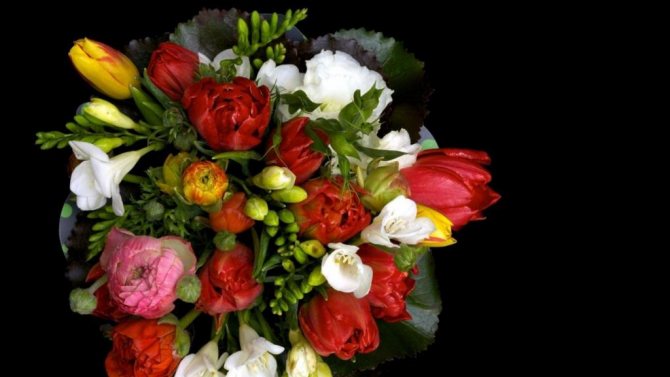

Ideal for those people who are trying to achieve rigor in their bouquet. This flower creates a kind of "glass" texture, which gives the composition additional sophistication and some fragility. It is best to use freesia in spring compositions in order to convey the awakening of nature to the recipient. Flowers are ideal for wedding floristry, when you need to add a touch of romance to an important event. Freesia represents complete and unconditional trust.
Achromatic color concept
Analyzing, for example, the colors of flowers, a person also pays attention to such quality features that are not included in the list of basic ones. For example, there are plants of an unusual shade - close to black or gray. So what, then, is the reason for their existence? In fact, such a phenomenon is the absence of light fluxes, and therefore, the color itself. It can lead to discoloration. The paradox can be resolved by realizing that the words about the lack of color should not be taken literally. In a specific case, we are talking about the absence of color tones of specific spectral constituent elements. At maximum depletion of any color, there will be an inability to distinguish it. That is, it will become achromatic. The brightest representative of this group of quality parameters is white, and the darkest is black.
What are predatory flowers
Not all natural creations are harmless. There is a certain group of predatory plants. Most of the plants of this type grow on the African continent, but some varieties are also found in Russia. In carnivorous flowers, a bright color signals danger.
As a rule, predatory plants have a flower that exudes a scent attractive to insects.And as soon as an insect sits on such a flower, then its bud either slams, or the insect gets bogged down in it, unable to get out to freedom. Small rodents sometimes get into the bowls of flowers of such plants. The brighter the flower, the more poisonous or dangerous it is.
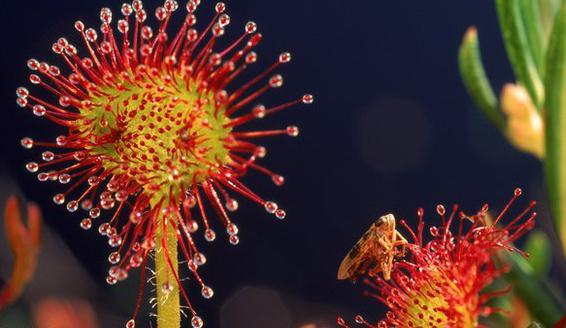

Physico-chemical understanding of color
The concept of the term that we are analyzing in this article can be not only physical, but also biological in nature. And also there are many words with the root "color", for example, a flower garden, flower, flowering, peduncle, etc. When defining a given speech unit, it is important to clearly understand what exactly it is about.
The colors of objects are the complex result of the interaction of several factors, for example, such as the qualitative characteristics of the surface, the temperature index, the relative magnitude of the speed of movement of the object or subject, etc. In total, the wavelength of an electromagnetic nature is determined by these factors.
The determination of which color is in front of us is due to the presence of chromophores - a special group of unsaturated atoms that are responsible for the color of a chemical compound. Also, do not forget about the absorbing electromagnetic radiation, which is present regardless of color.
The group of carbonyl compounds C = O refers to chromophores that are absorbed by waves within 280 nanometers, but ketones containing this group have no color. Otto Witt, a scientist from Germany, proposed the chromophore theory in 1878. Chromophoric substances include compounds with a nitrogen group (N = N), a nitro group (NO2), a nitroso group (N = O) and a carbonyl group (C = O).
A person often pays attention to such things as, for example, the presence of color in flowers. However, depending on the characteristics of the light wave, the color of a plant or any other object may change. Also, let's not forget that the length of the absorbed light affects the perception of the hue.
Physical optics defines light as radiation of an electromagnetic nature, which is perceived by the human eye. Shortwave boundaries are defined by designating the range of the spectrum that light occupies, and corresponds to the wavelength in vacuum: 380 - 400 nm or 750 - 790 THz. The long-wavelength boundary is placed in the range from 760 to 780 nanometers (385-395 THz).

